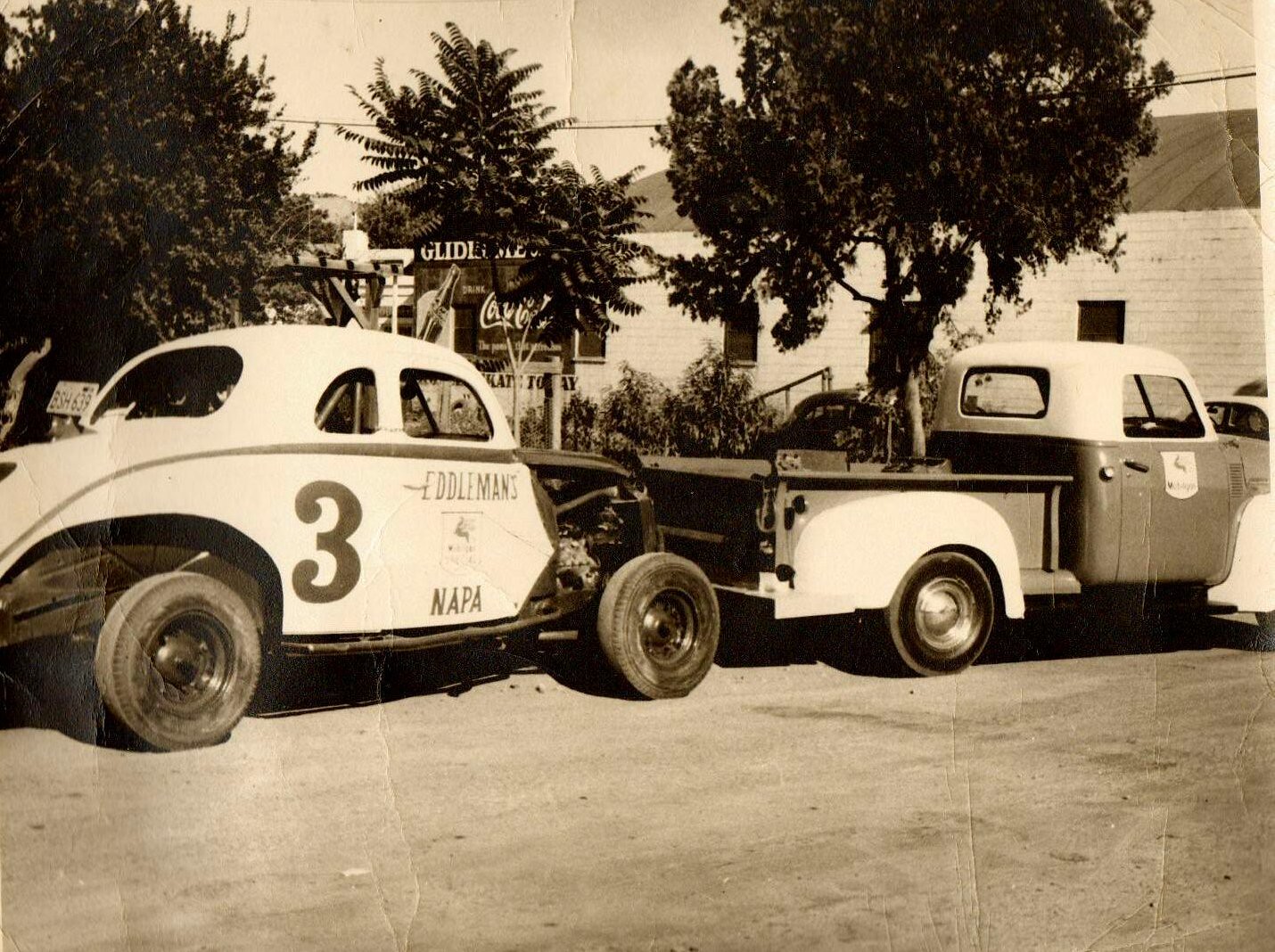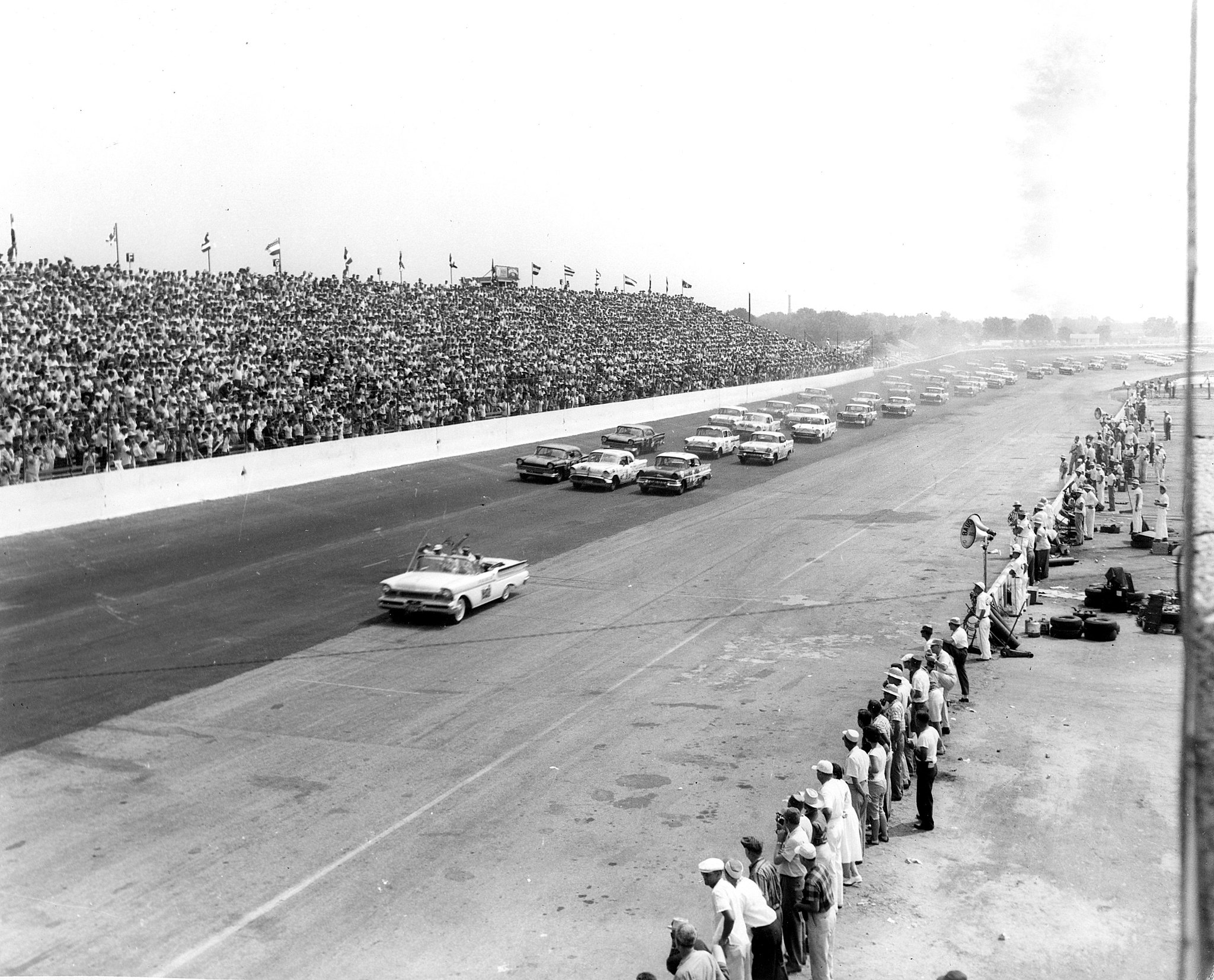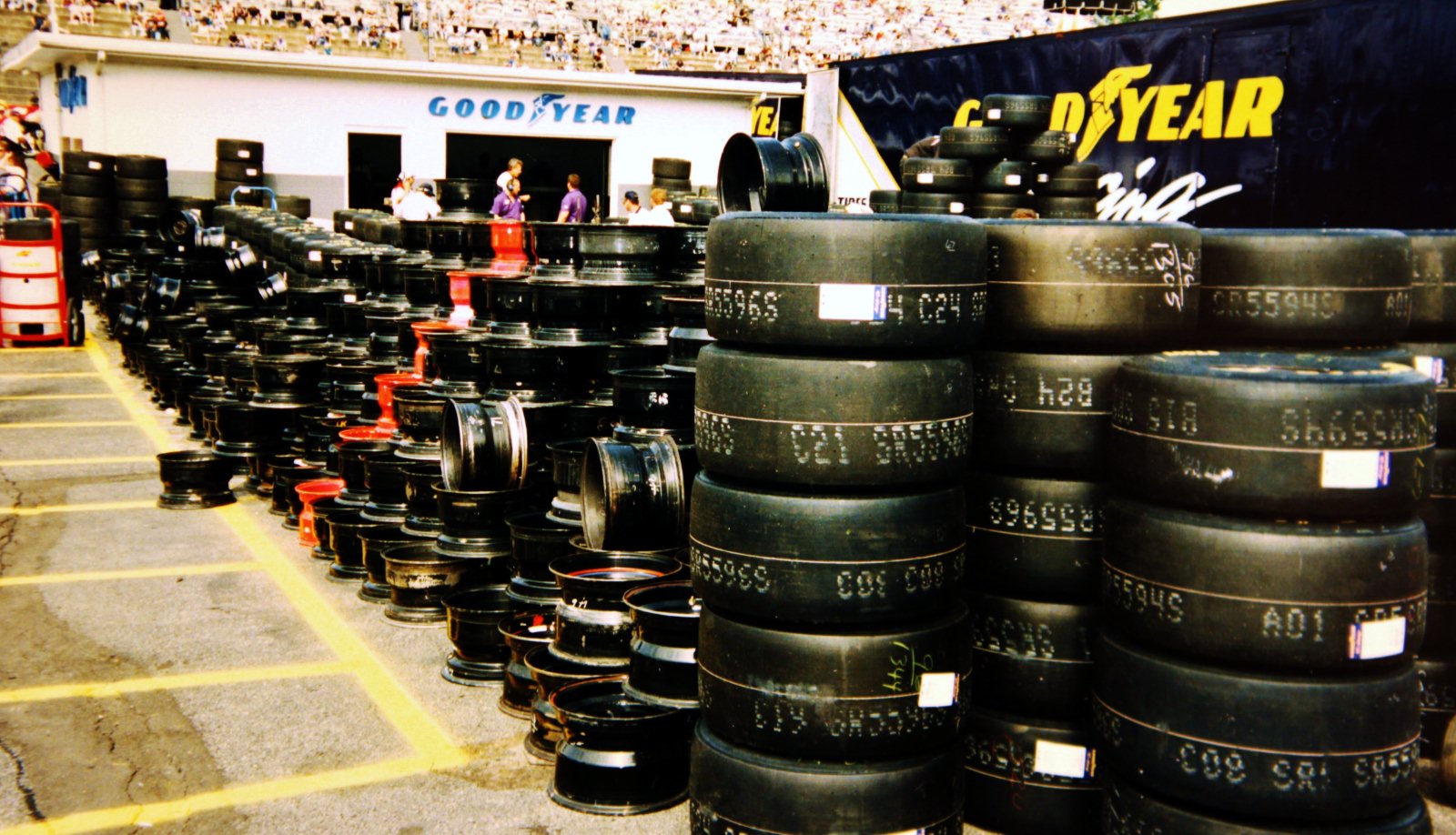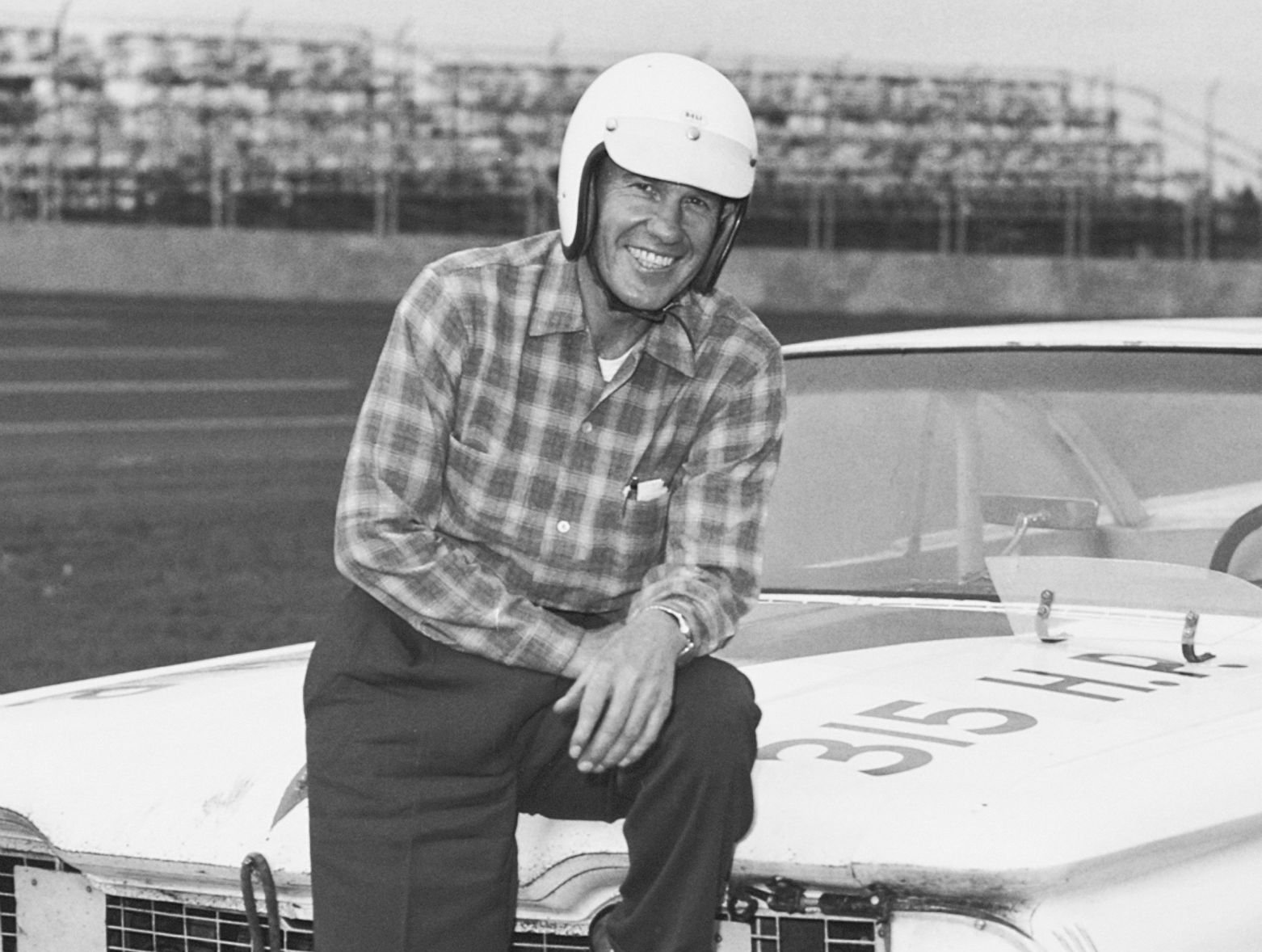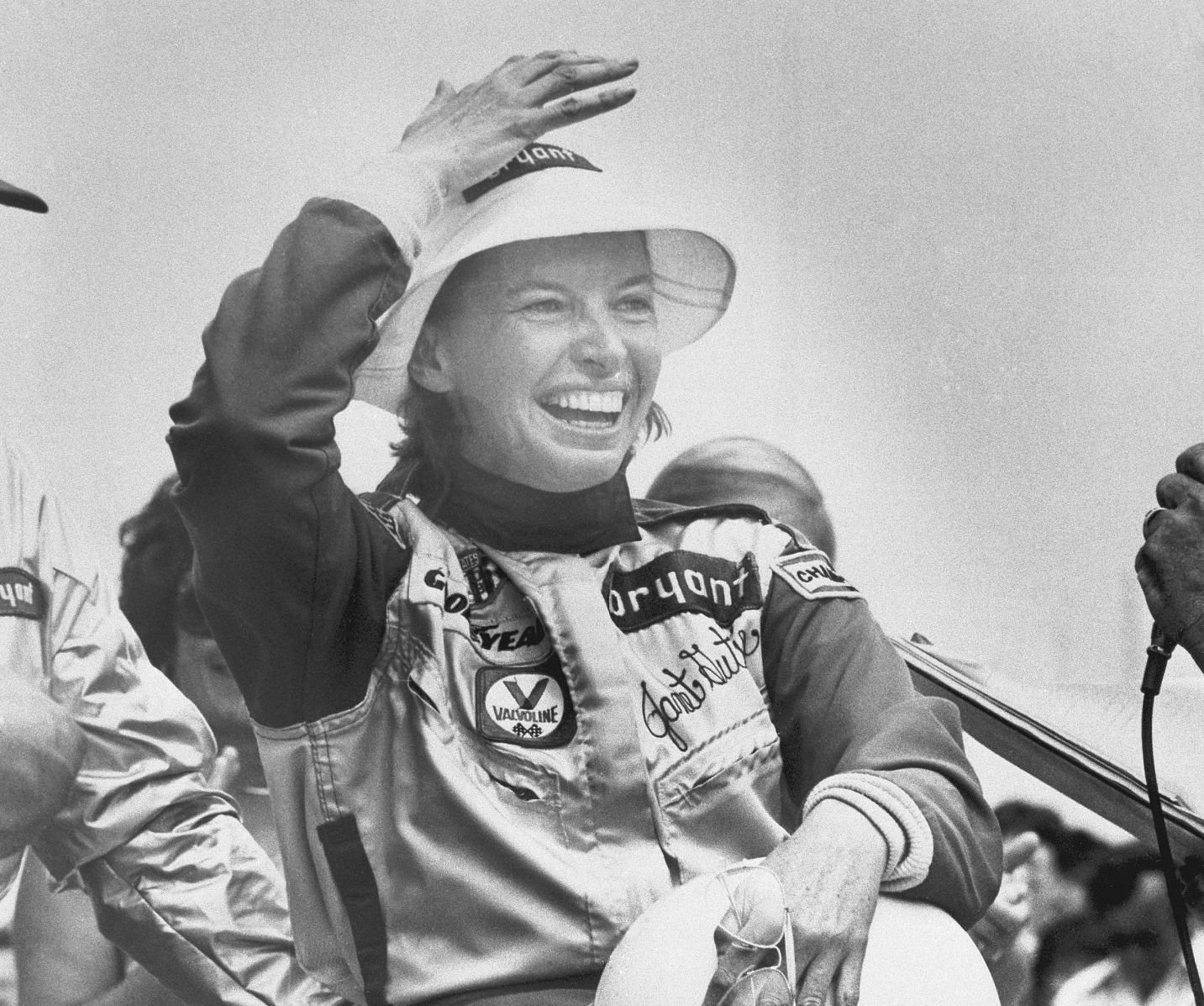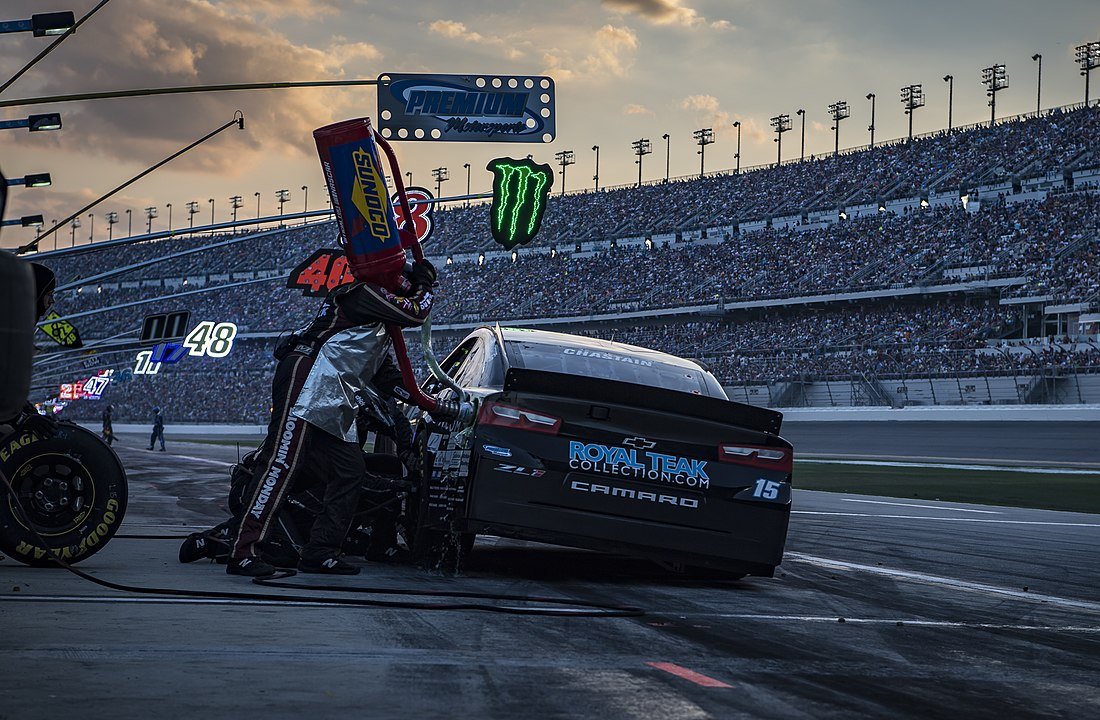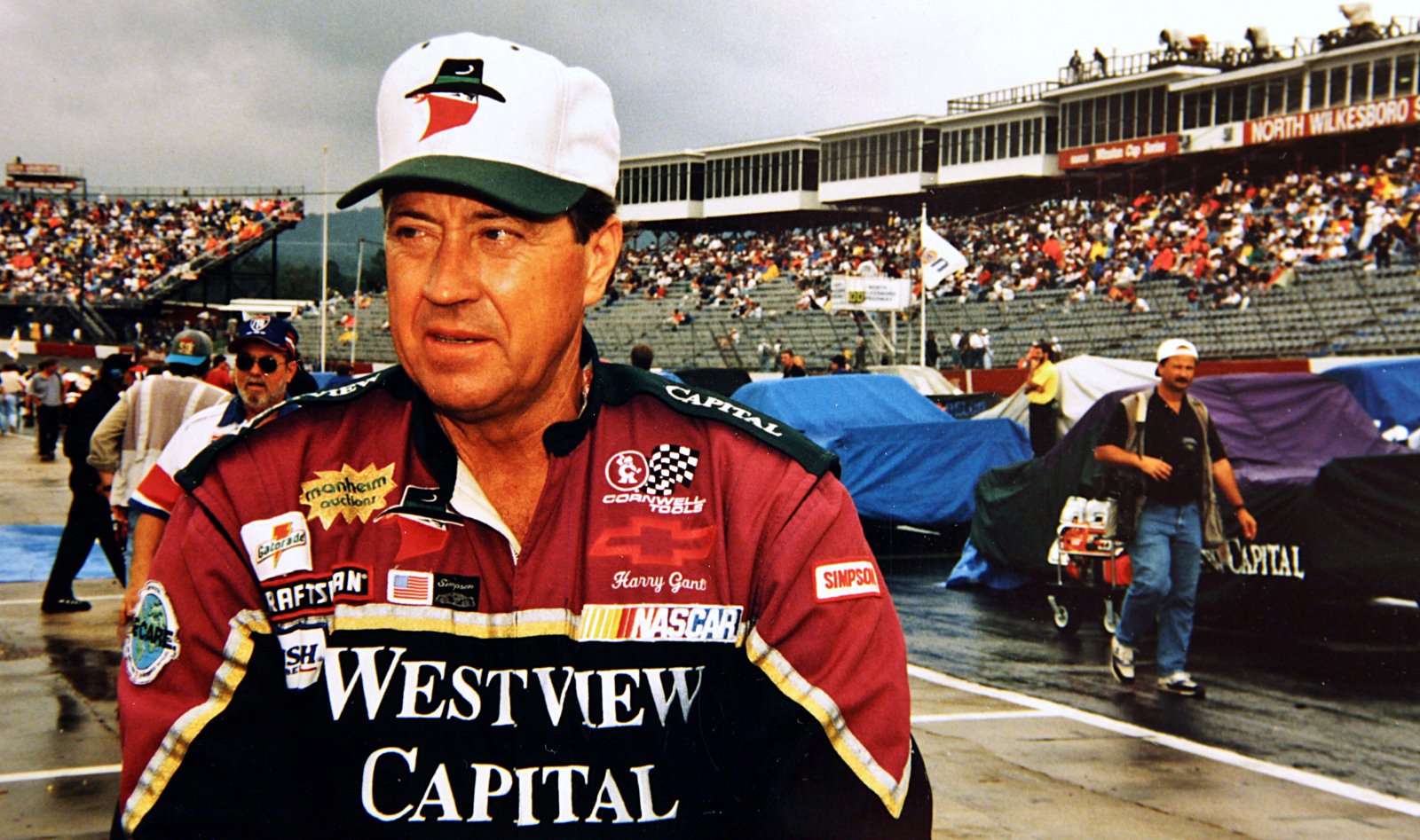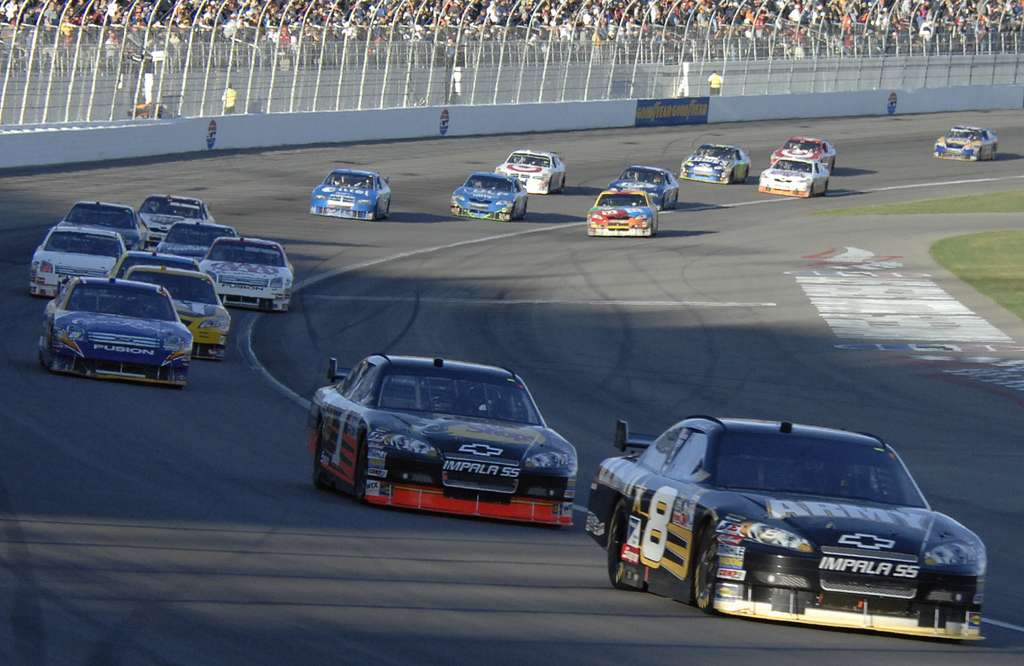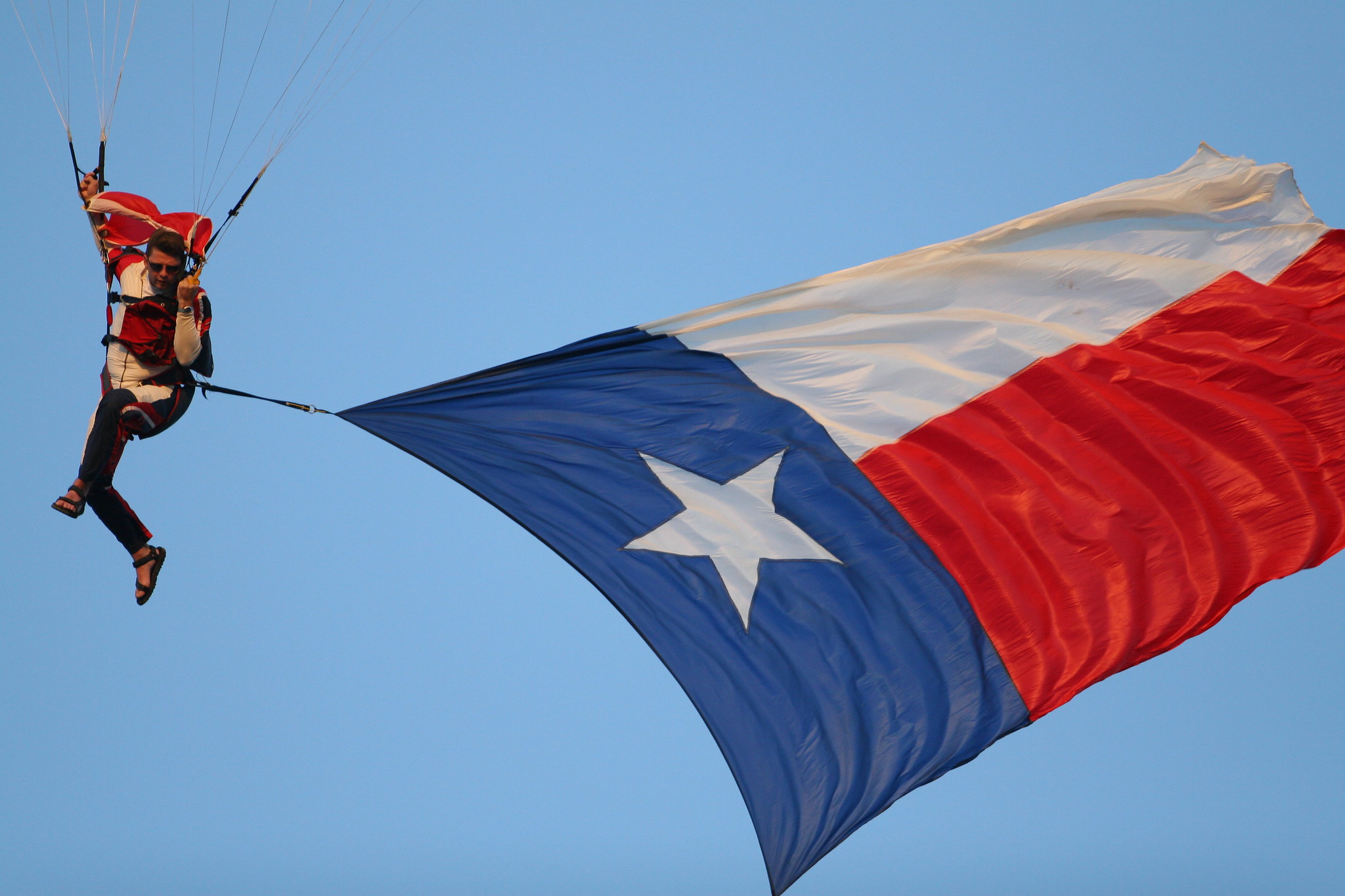A First Time For Everything
Since its first dirt-track races, NASCAR has seen more than its fair share of memorable and crazy moments. With a track record of events spanning from the brilliant to the bizarre, fans have come to expect the unexpected. Check out this list of NASCAR firsts and see for yourself!
First Race
Charlotte Fairgrounds was the site of NASCAR’s first official Strictly Stock race on June 19, 1949. After all 33 cars in the race overheated, Glen Dunaway was the last driver running. When race officials found illegal modifications on his rear springs, runner-up “Alfalfa” Jim Roper was made the winner. An angry appeal was tossed out of court by a local judge, upholding NASCAR’s will to police its new operation.
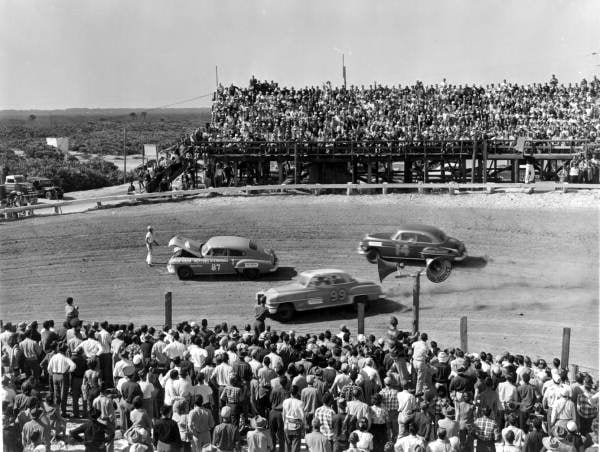 State Archives of Florida, Getarchives
State Archives of Florida, Getarchives
First Race On A Paved Course
Fans of the new circuit known as NASCAR got to hear the screech of tires on pavement for the first time at Dayton Speedway in Ohio on June 25, 1950. Jimmy Florian and his 1950 Ford passed Curtis Turner with 35 laps to go to win his first Grand National Cup race. It would turn out to be the only win of his career.
First Southern 500
After years of roaring around fairground dirt tracks, drivers viewed the new track at Darlington as a revelation. The first 500-mile race in NASCAR history was far beyond anything most of them had experienced. Its first winner, Johnny Mantz, won because he had the best tires. The Southern 500 quickly became the pinnacle of NASCAR, a perch it would maintain until the Daytona 500 became established.
First Race Held Outside The United States
Stamford Park in Niagara Falls, Ontario was the site of the first NASCAR race on foreign soil on July 1, 1952. With only three of the original 17 entries finishing the race, Buddy Sherman and his 52 Hudson Hornet brought home what would be the only win of his career.
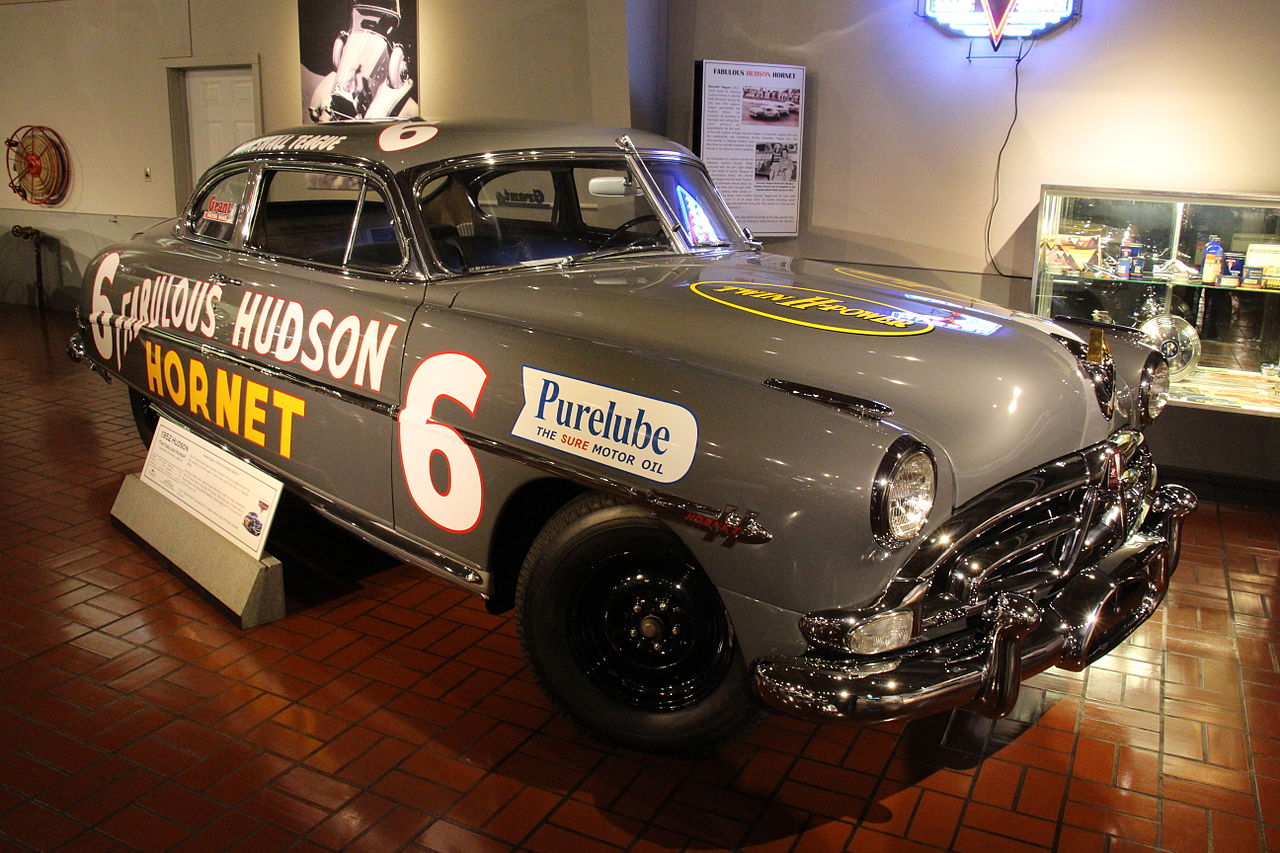 Sicnag, CC BY 2.0, Wikimedia Commons
Sicnag, CC BY 2.0, Wikimedia Commons
First Factory Support
The popularity of the Hudson Hornet lay in its superior cornering ability, sturdiness, and low center of gravity. In 1951, with a slew of recent wins under his belt, Marshall Teague made a cold-call to the Hudson plant in Detroit and walked out later that day with a factory sponsorship agreement from the company. Hudson had become the first manufacturer’s racing team.
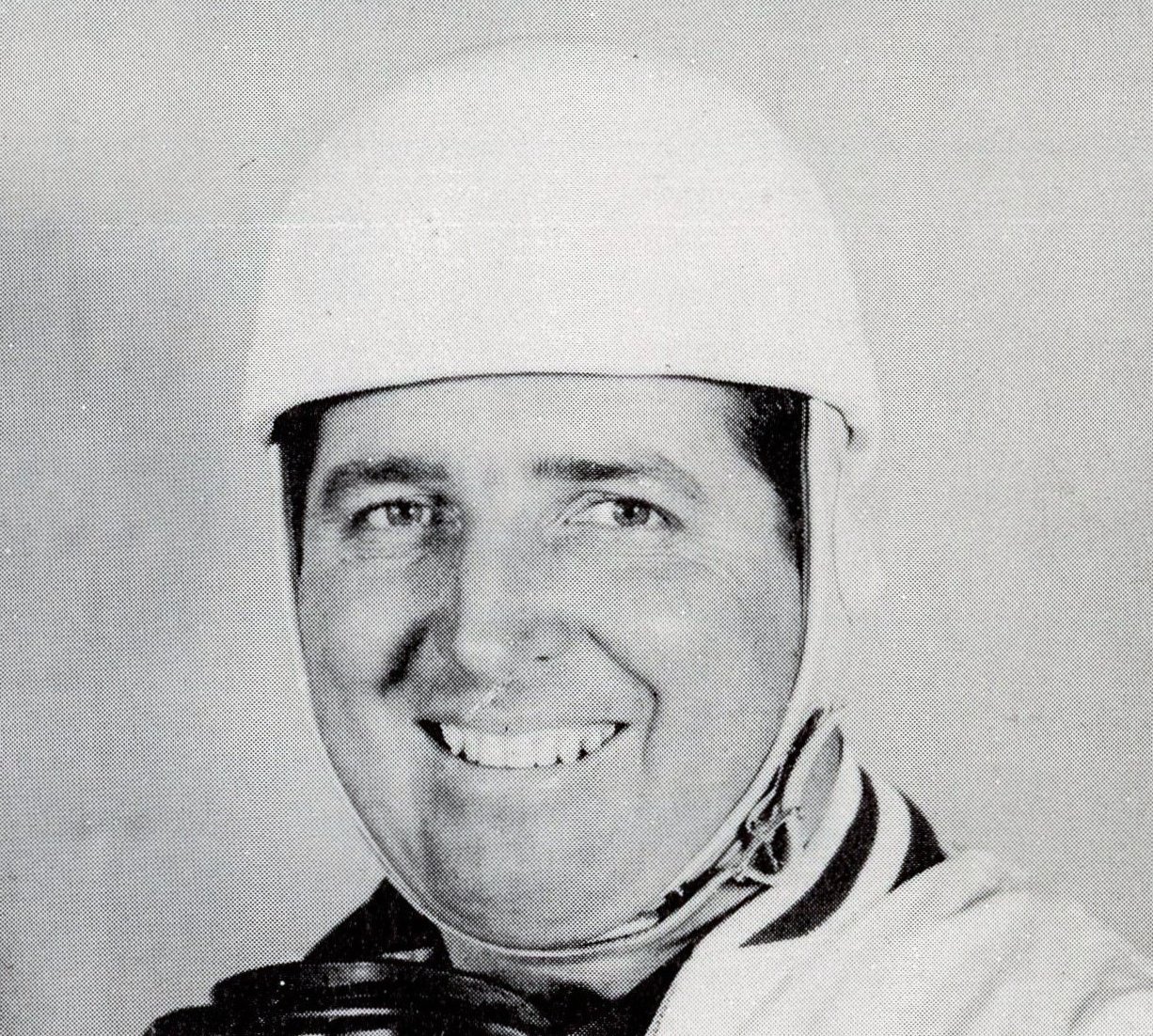 Trenton International Speedway, Wikimedia Commons
Trenton International Speedway, Wikimedia Commons
First Tire War
Firestone was the tire of choice in the early days of NASCAR. That changed in 1954 as Goodyear entered the lucrative stock car tire market. The two tire makers would engage in a two-decade struggle for racetrack rubber supremacy, with plenty of interesting innovations and improvements along the way. The war ended in 1974 when Firestone dropped out of the racing market altogether.
First Daytona 500
The first-ever Daytona 500 was maybe its most controversial. Front-runners Lee Petty and Johnny Beauchamp finished neck-and-neck, requiring three days of photo analysis that proved Petty the winner by a foot. The uncertainty kept NASCAR on the front page of the papers for several days, boosting NASCAR’s public profile.
 SarahStierch, CC BY 4.0, Wikimedia Commons
SarahStierch, CC BY 4.0, Wikimedia Commons
First Father To Dispute Son’s Win
It was June of 1959 at Atlanta’s Lakewood Speedway when Richard Petty drove through a cloud of dust to the sight of a checkered flag. But the jubilation of winning his first race was short-lived, as he learned someone had protested. It was none other than his dad, Lee Petty! Race officials confirmed Lee had lapped Richard while he’d been in the pits. The win helped Lee take the Grand National title that year.
First Journalist To Save A Driver’s Life
When longtime racing journalist Chris Economaki witnessed driver Lenny Page slumped and unresponsive in his car after a terrible crash at the 1960 World 600, he rushed to help. Using his own shirt to stop the blood flowing from Page’s chest, he stayed with Page until medical help arrived. After a long recuperation, Page wrote to Economaki, thanking the roving reporter for saving his life.
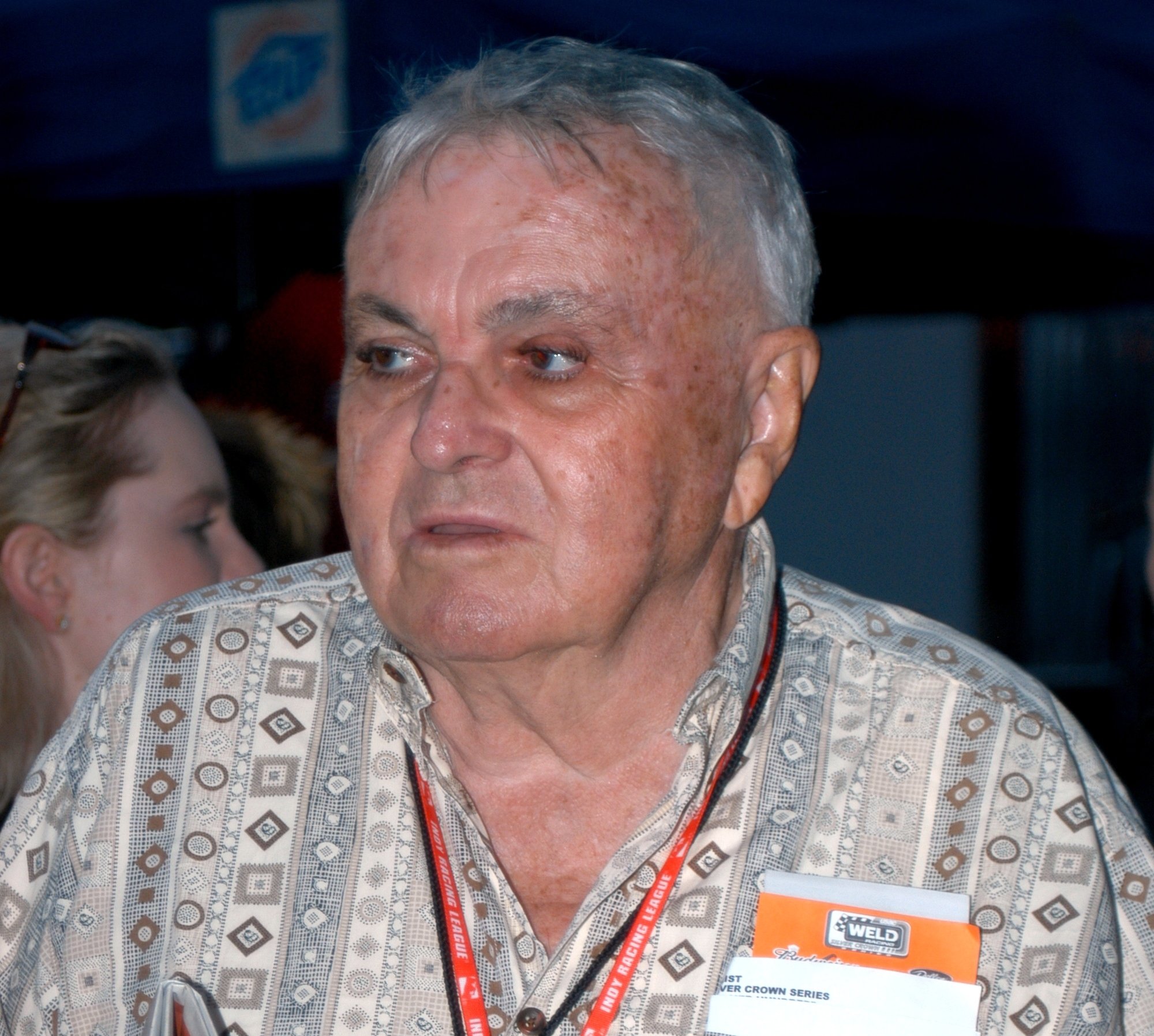 Bruce Alan Bennett, Shutterstock
Bruce Alan Bennett, Shutterstock
First Black Driver To Win A Cup Race
Winner of numerous short-track and junior circuit races, Wendell Scott took his first Grand National cup series race on December 1, 1963 at Speedway Park in Jacksonville, Florida. Overcoming relentless prejudice in the segregated South of the 50s and 60s, Scott’s groundbreaking victory is one of the most impressive by any driver in NASCAR history. Wendell was voted to the NASCAR Hall of Fame in 2015.
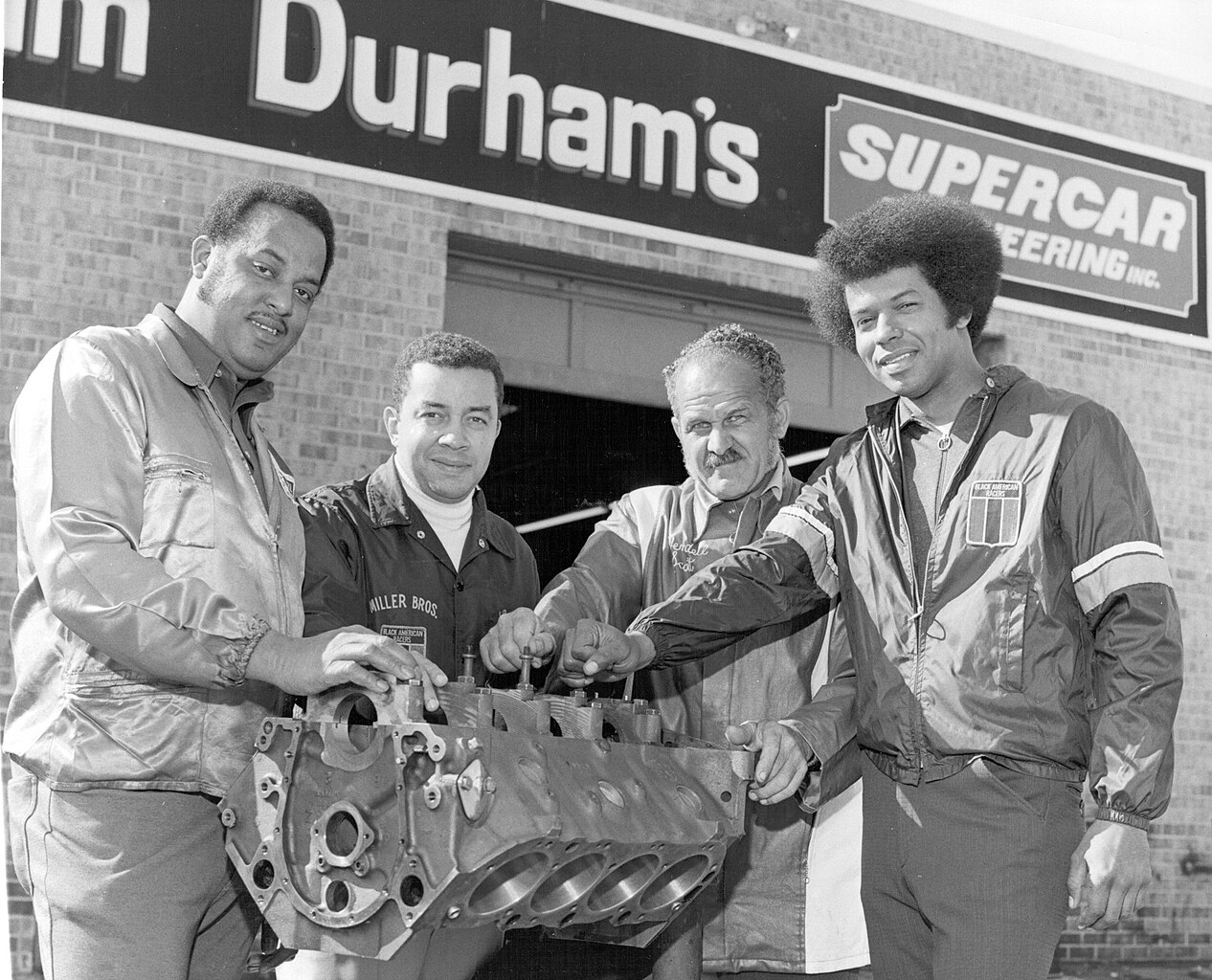 Ethancasey, CC BY-SA 3.0, Wikimedia Commons
Ethancasey, CC BY-SA 3.0, Wikimedia Commons
First Foreign-Born Driver To Win A NASCAR Race
Though born outside the United States, he was by no means an unfamiliar face to racing fans! Mario Andretti took the 1967 Daytona 500, and would later become one of only two drivers (AJ Foyt was the other) to win both the Daytona and Indianapolis 500.
 Suyk, Koen, CC BY-SA 3.0, Wikimedia Commons
Suyk, Koen, CC BY-SA 3.0, Wikimedia Commons
First Driver Strike
Unhappy with the lack of durability of tires on the new track at Talladega, drivers led by Richard Petty requested postponement of the inaugural race of the super-speedway. NASCAR president Bill France would have none of it, causing the drivers and their short-lived Professional Drivers Association to boycott the race. The race would have to go ahead with replacement drivers.
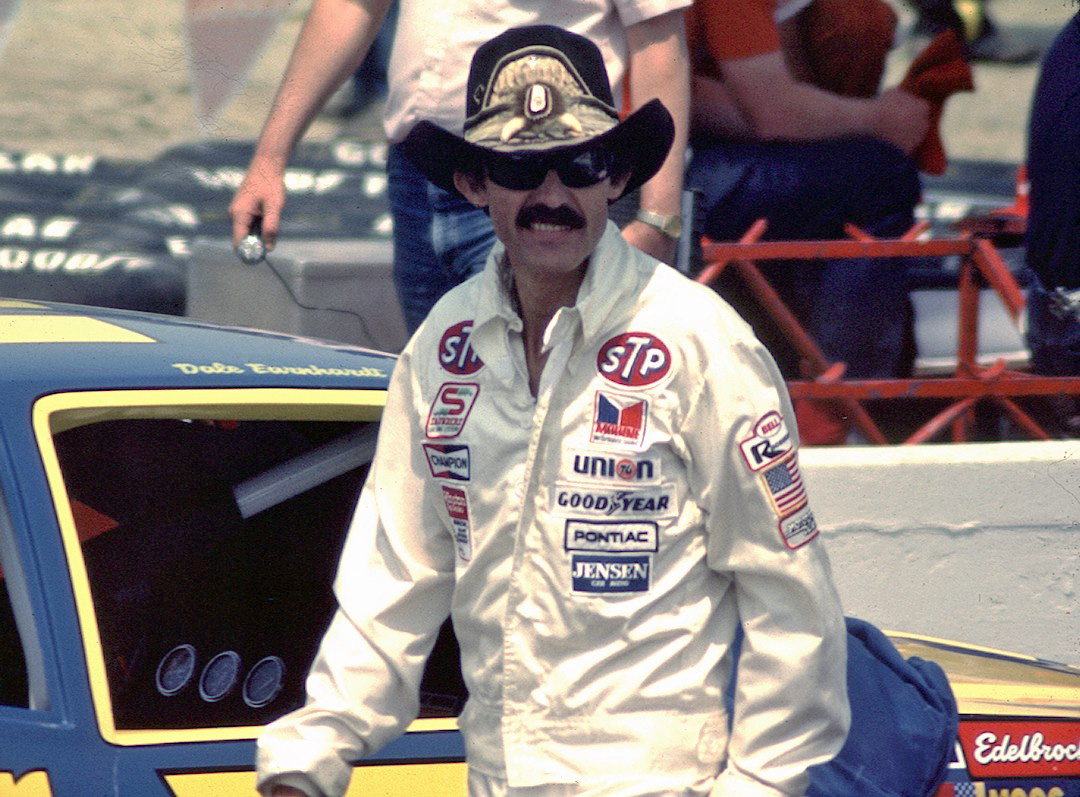 Ted Van Pelt, CC BY 2.0, Wikimedia Commons
Ted Van Pelt, CC BY 2.0, Wikimedia Commons
First Race At Talladega
With most of the top-line drivers boycotting the race, NASCAR brought in drivers from the Grand America Series, the forerunner of today’s Xfinity. With free admission to make up for the absence of so many high-profile drivers, the race went off without any major safety incidents. Better tires and some major track improvements brought everyone back the following year.
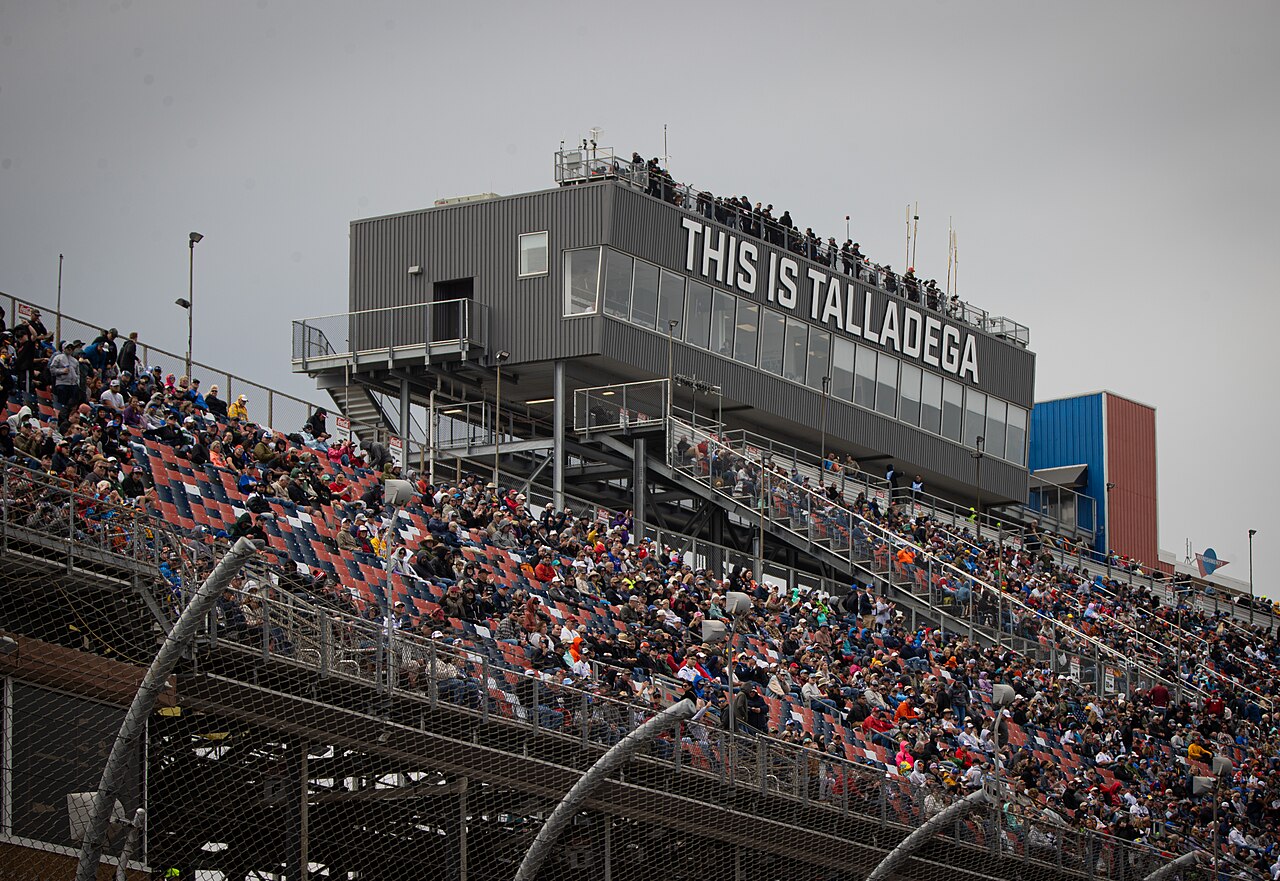 Jaccob Hearn, Wikimedia Commons
Jaccob Hearn, Wikimedia Commons
First Race With Mandatory Window Nets
The Grand National race at Dover on September 20, 1970 marked the first time that all cars ran with window nets. NASCAR made the move in the aftermath of Richard Petty’s accident in the Rebel 400 at Darlington. Petty’s car flipped several times and came to rest upside down with his upper body hanging outside the vehicle. Miraculously, Petty sustained only a dislocated shoulder.
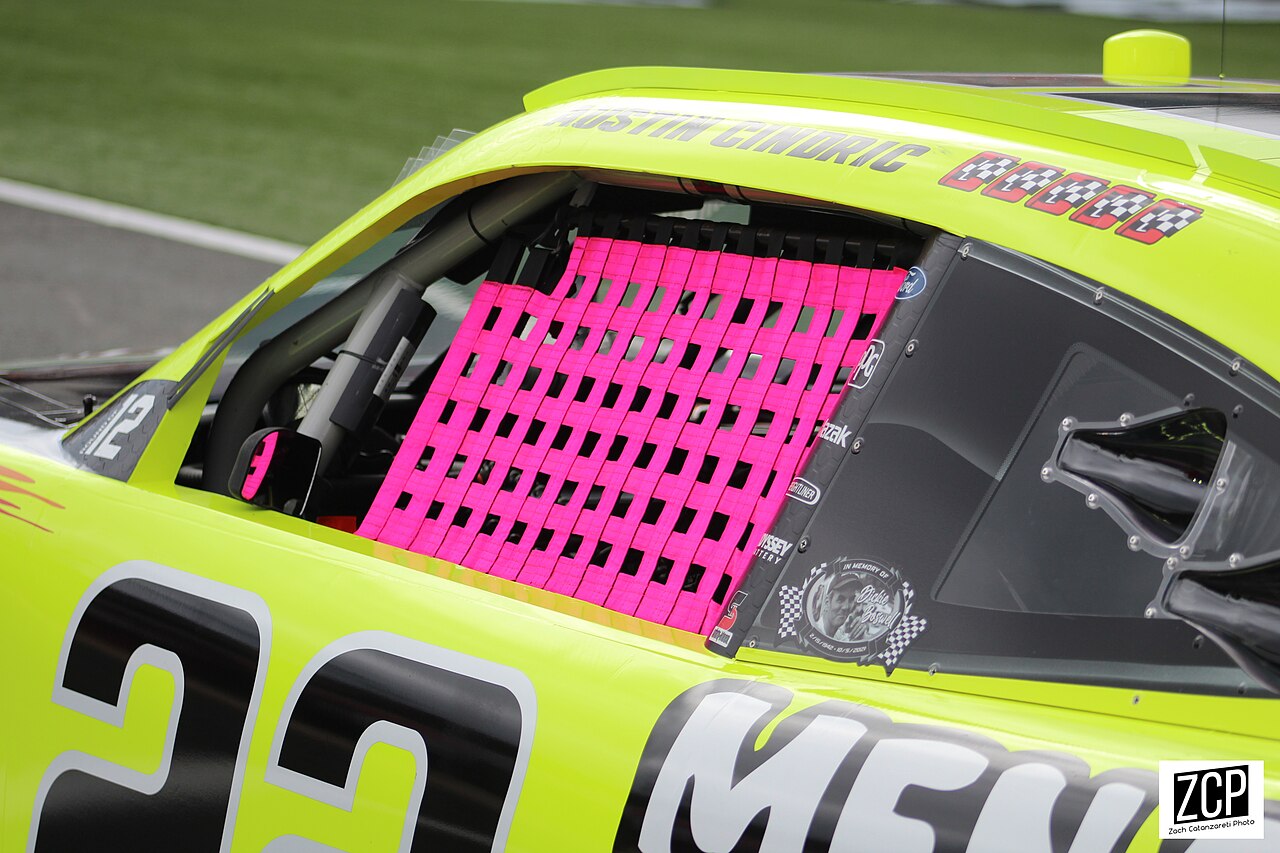 Zach Catanzareti Photo, CC BY 2.0, Wikimedia Commons
Zach Catanzareti Photo, CC BY 2.0, Wikimedia Commons
First To Break 200 MPH
In a test run at Talladega on March 24, 1970, Buddy Baker completed two laps in his 69 Dodge Daytona at an average speed of 200 mph, the first to hit the benchmark on a closed racecourse in the United States. Buddy credited the track’s 33-degree bank angle for the newfound speed.
 BWard 1997, CC BY 4.0, Wikimedia Commons
BWard 1997, CC BY 4.0, Wikimedia Commons
First Woman To Race In The Daytona 500
Janet Guthrie made history in the 1977 Daytona 500 as the first female driver to compete in the race. She finished 12th that day, and went on to four top-10 finishes in 19 races that season in the #68 Kelly Girl Chevy Laguna. Guthrie would also drive in the Indianapolis 500 three times. She was inducted into the NASCAR Hall of Fame in 2024.
First Bristol Night Race
The Bristol Night Race got its start in 1978 when new track owners Lanny Hester and Gary Baker introduced night racing to boost sagging attendance numbers. The idea was immediately popular, and the race has become one of the most eagerly anticipated on the NASCAR schedule.
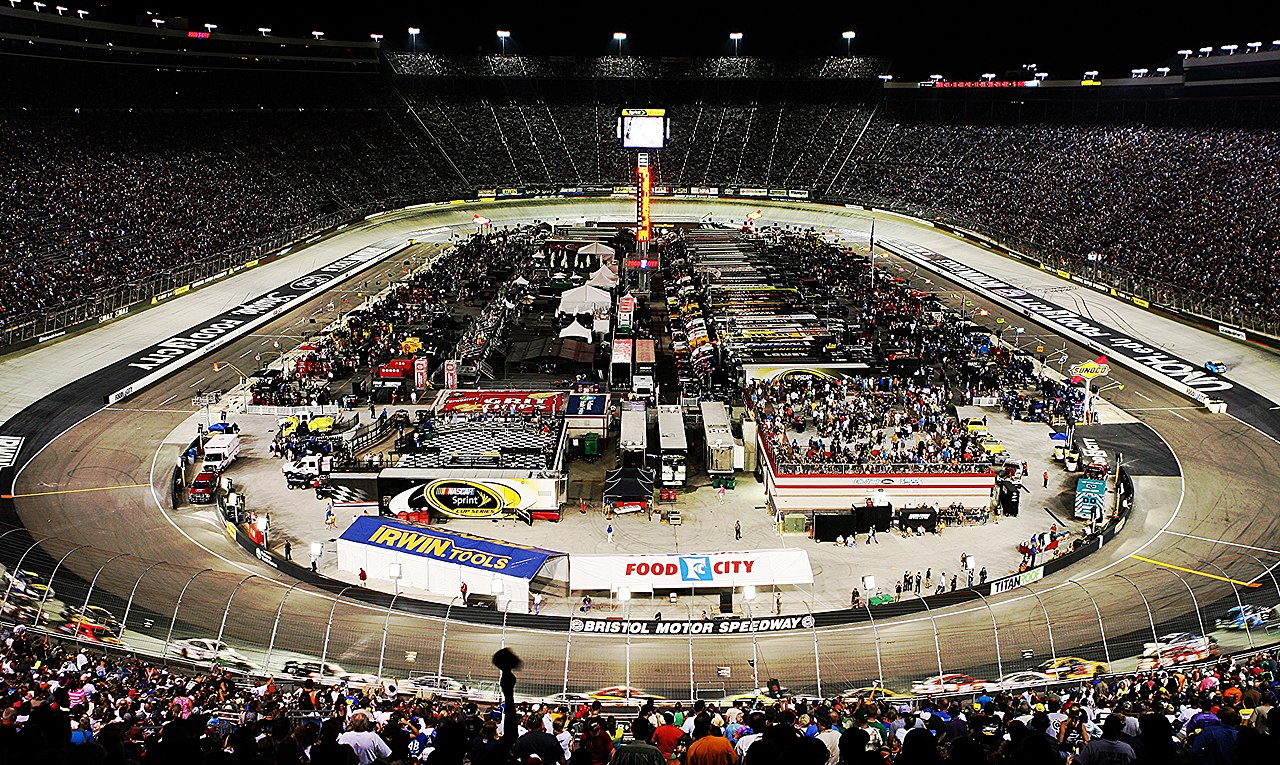 Raniel Diaz, CC BY 2.0, Wikimedia Commons
Raniel Diaz, CC BY 2.0, Wikimedia Commons
First Full Network Broadcast Of Daytona 500
The 1979 Daytona 500 marked the first time that the race would be shown on national TV in its entirety. Aided by a snowstorm on the Eastern seaboard that kept many indoors that Sunday, the broadcast enjoyed a record audience. The race is still remembered for its crash and ensuing slugfest between the Allison brothers and Cale Yarborough, allowing Richard Petty to make off with the win.
 Nascarking, CC BY-SA 4.0, Wikimedia Commons
Nascarking, CC BY-SA 4.0, Wikimedia Commons
First On-Board Camera
The 1983 Daytona 500 broadcast saw the first use of the in-car camera by CBS. The choice to install the camera in Cale Yarborough’s car turned out to be a good one, as Yarborough would end up winning the race. In-car cameras have since become a standard part of NASCAR TV race coverage.
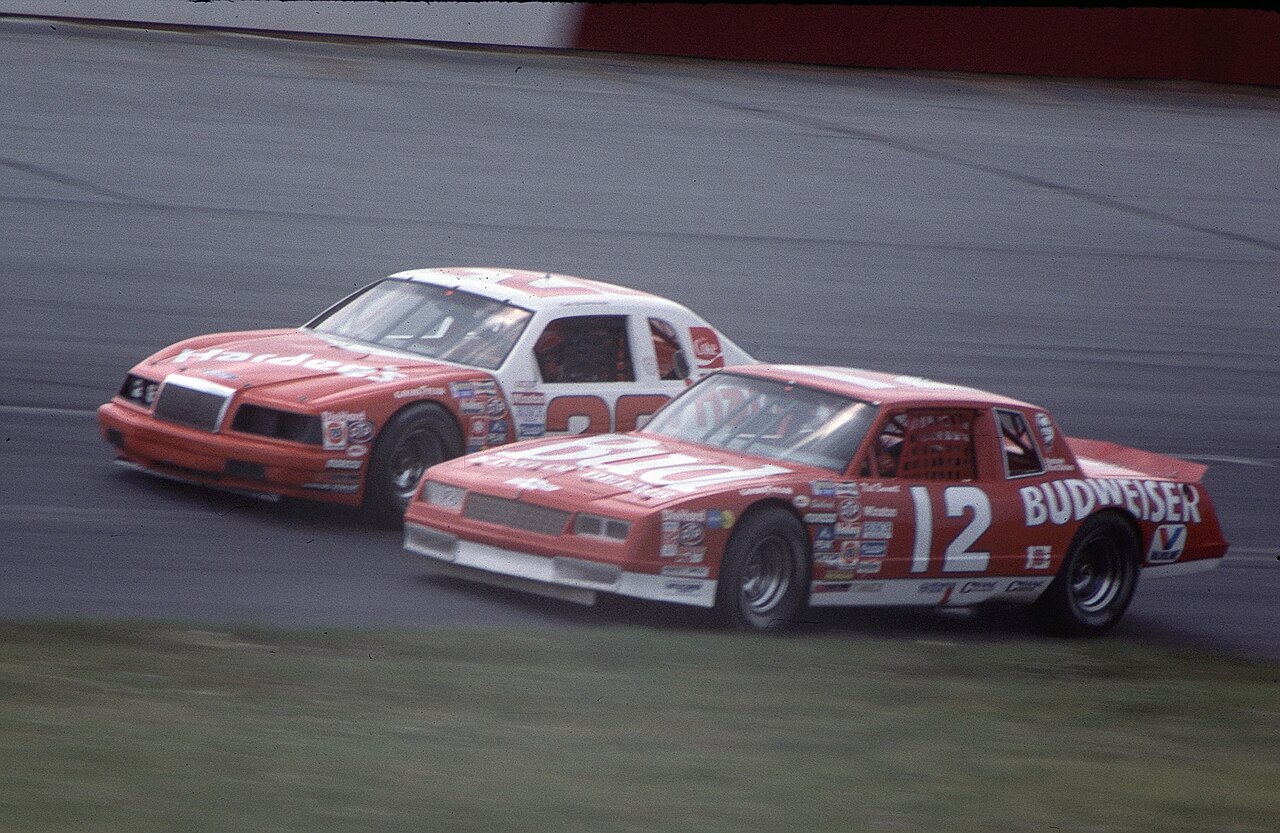 Ted Van Pelt, CC BY 2.0, Wikimedia Commons
Ted Van Pelt, CC BY 2.0, Wikimedia Commons
First Million-Dollar Winner
In 1985, NASCAR sponsor Winston offered a million dollars to any driver that could win three of the top four races on the circuit (Daytona 500, Southern 500, Winston 500, and World 600). It didn’t take long for a winner to emerge: Bill Elliott rolled to wins in all except the World 600 in 1985 to earn the money and the nickname “Million Dollar Bill”.
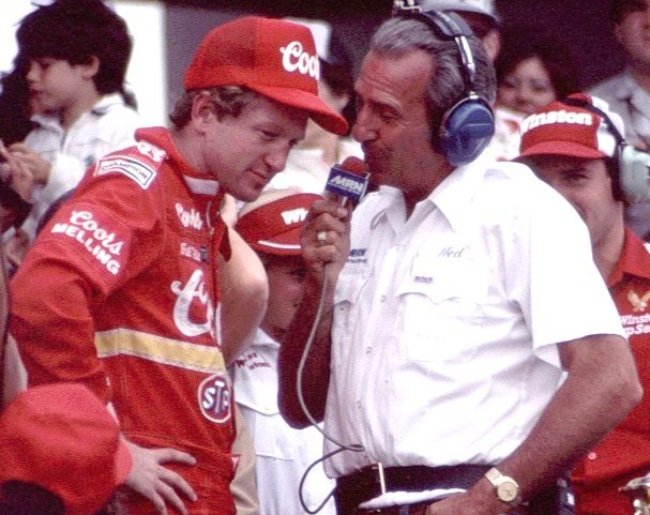 Ted Van Pelt, CC BY 2.0, Wikimedia Commons
Ted Van Pelt, CC BY 2.0, Wikimedia Commons
First Stolen Pace Car
“He saw an opportunity and took it” may be the best way to explain whatever was going through the mind of fan Darren Crowder when he stole the pace car moments before the 1986 Winston 500 at Talladega. Wandering the infield, Crowder spotted the pace car with the keys in the ignition, and was soon barreling around the track at 100 mph. Having achieved his unlikely NASCAR first, Crowder was stopped by police and hauled off to the slammer.
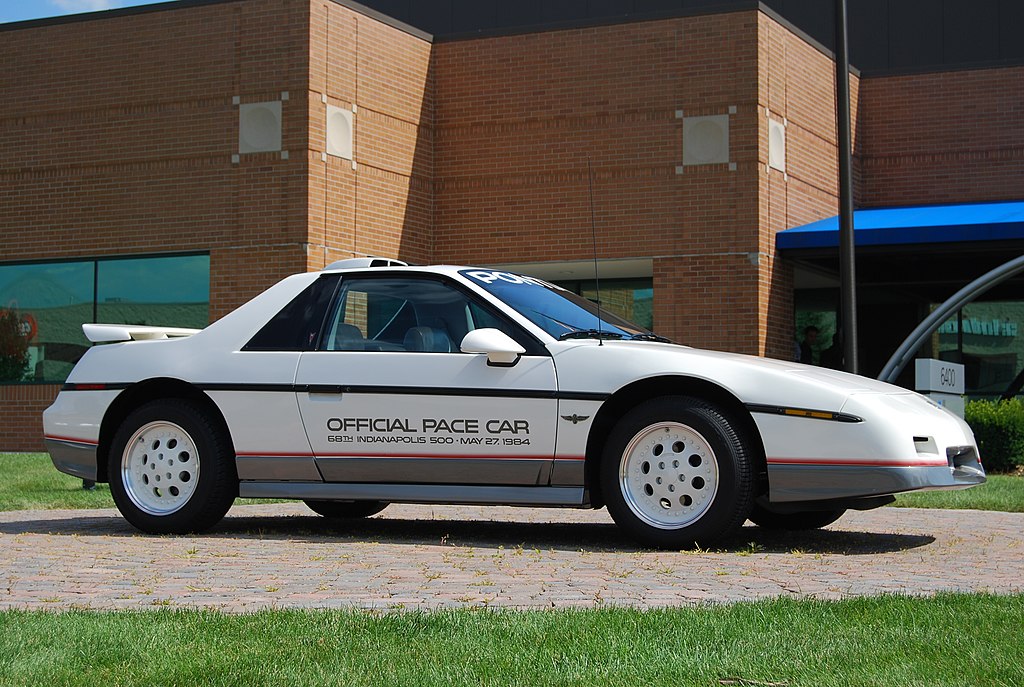 artistmac, CC BY-SA 2.0, Wikimedia Commons
artistmac, CC BY-SA 2.0, Wikimedia Commons
First Race At Watkins Glen
August 10, 1986 marked the first NASCAR race at Watkins Glen since the mid-60s. Tim Richmond was the winner, beating out Darell Waltrip and Dale Earnhardt, one of seven wins on the season for Richmond. This race marked the permanent return of the classic road course to the NASCAR cup circuit after sporadic past showings.
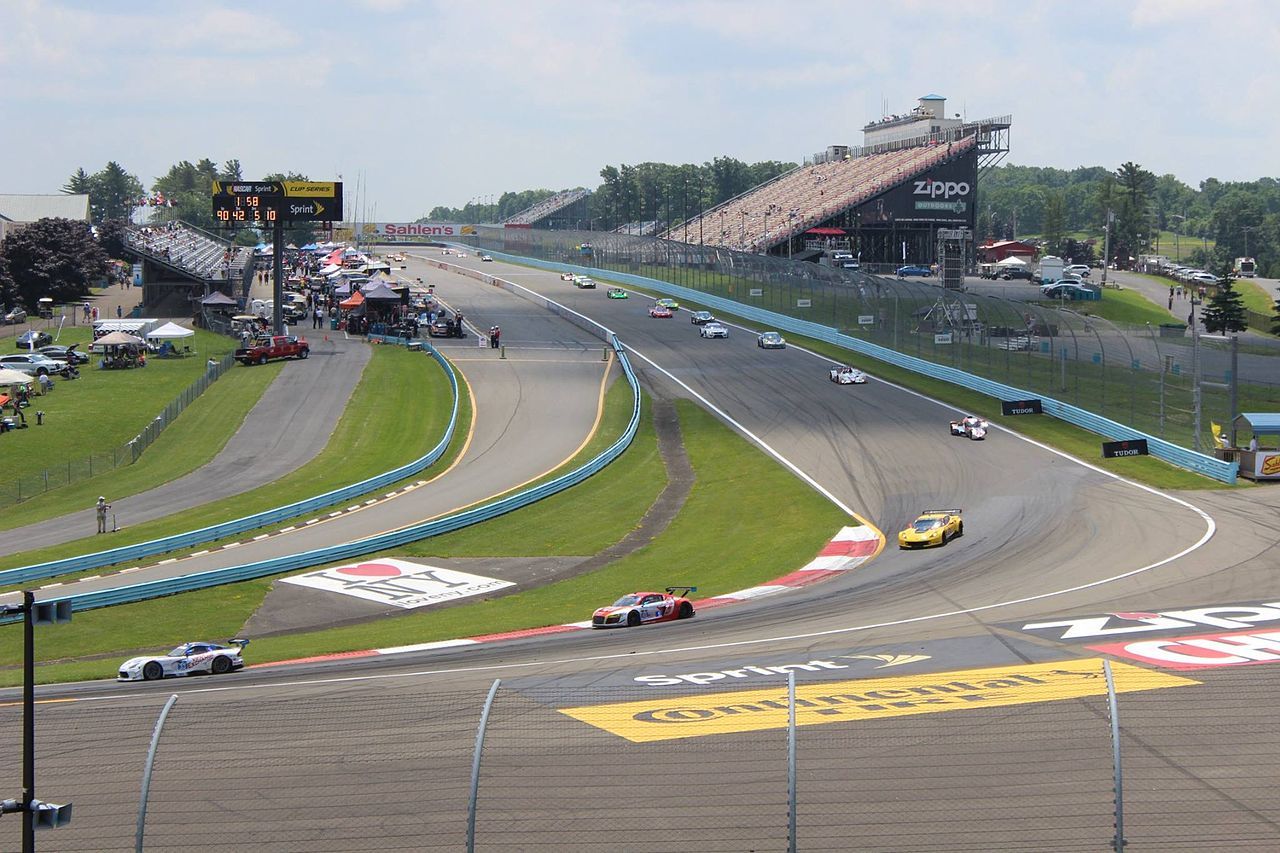 Pstark1, CC BY-SA 4.0, Wikimedia Commons
Pstark1, CC BY-SA 4.0, Wikimedia Commons
First Restrictor Plate Race
Bobby Allison’s spectacular 1987 crash at Talladega saw his car go airborne and nearly spin into the stands. Though nobody was seriously injured, NASCAR officials had seen enough, and mandated restrictor plates for all the big speedway races thereafter. The 1988 Daytona 500 would be the first race to use the speed limiters; the race would also see some other notable firsts.
First 50-Year-Old To Win The Daytona 500
The incomparable Bobby Allison took the 1988 Daytona 500, his third win in the famous race. At the age of 50, the win made Allison the oldest-ever Daytona winner. Even more surprising was who Allison beat to take the checkered flag.
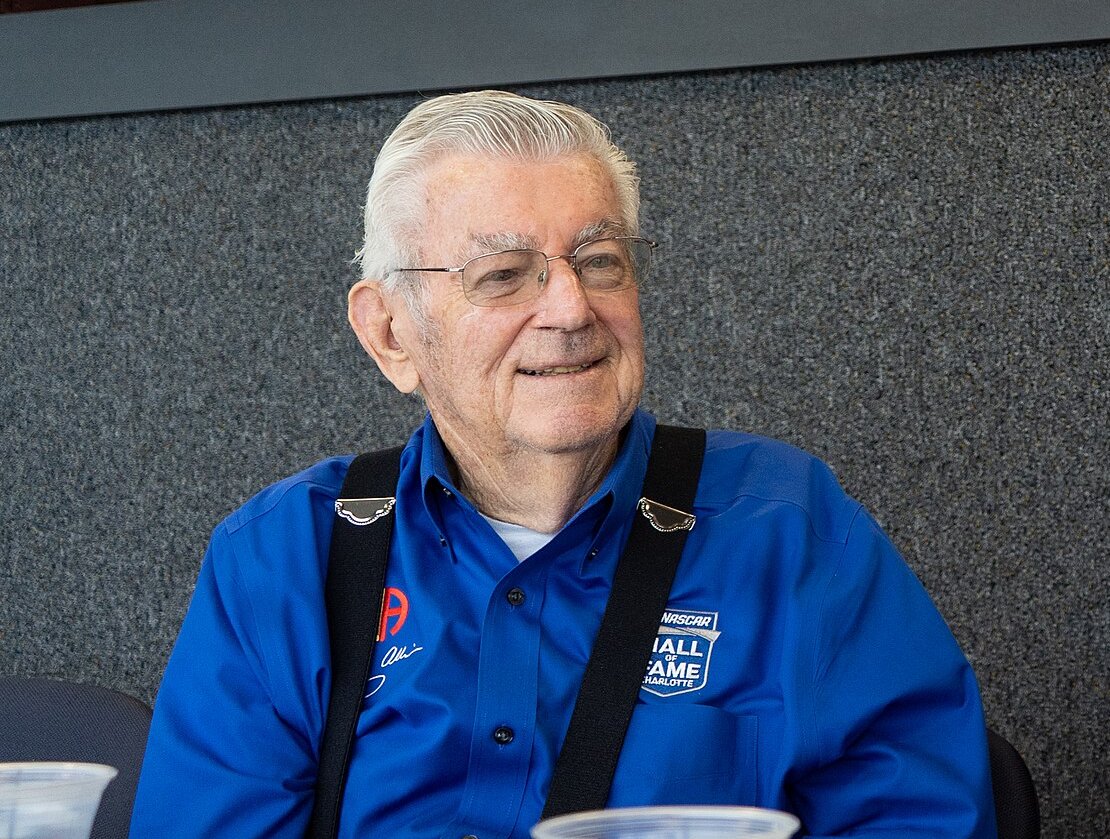 Virginia Office of the Governor, CC BY 2.0, Wikimedia Commons
Virginia Office of the Governor, CC BY 2.0, Wikimedia Commons
First Father And Son To Finish 1–2
It’s a well-known story in racing, but it always bears retelling. The story of Bobby Allison winning the Daytona 500 with his son Davey right behind him in second place remains one of the greatest images the sport has ever seen, and a NASCAR first that has yet to be repeated.
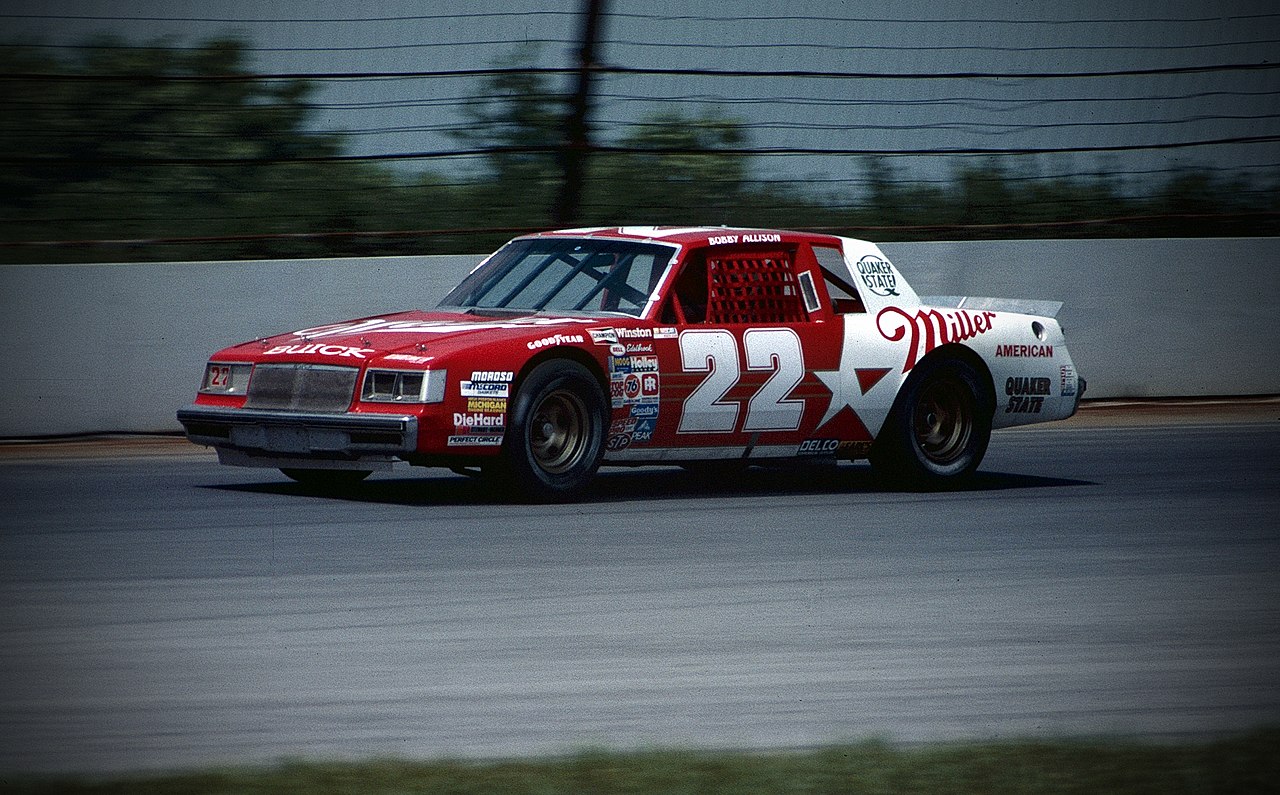 Ted Van Pelt, CC BY 2.0, Wikimedia Commons
Ted Van Pelt, CC BY 2.0, Wikimedia Commons
First NASCAR Race Outside North America
The 1988 Goodyear NASCAR 500 at the Calder Park Thunderdome in Melbourne, Australia was the first Winston Cup race held outside North America. An exhibition held the weekend after the Daytona 500, the race featured a mix of Australian and New Zealand racing legends amid the NASCAR stars. Neil Bonnett took first place, a long way from his Alabama Gang stomping grounds.
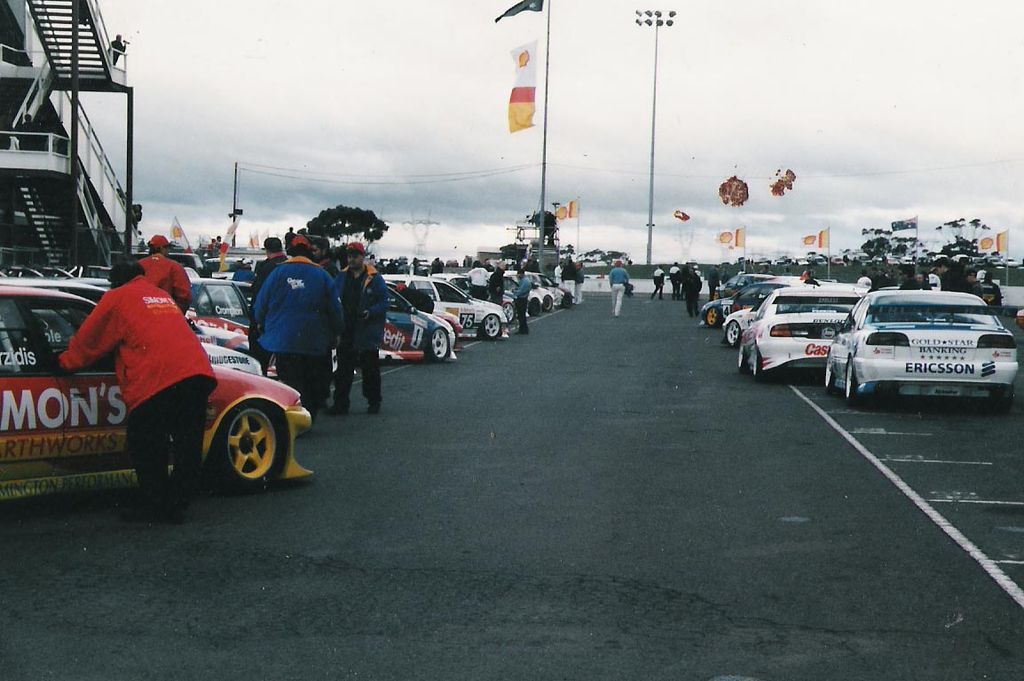 Roy Ellery, CC BY-SA 2.5, Wikimedia Commons
Roy Ellery, CC BY-SA 2.5, Wikimedia Commons
First Polish Victory Lap
Alan Kulwicki won his first race at Phoenix on November 6, 1988. He celebrated by driving his victory lap clockwise around the track, i.e. the wrong way! Alan said he wanted to be better able to look out the window at the cheering fans. The move made headlines and is still known as “the Polish Victory Lap”.
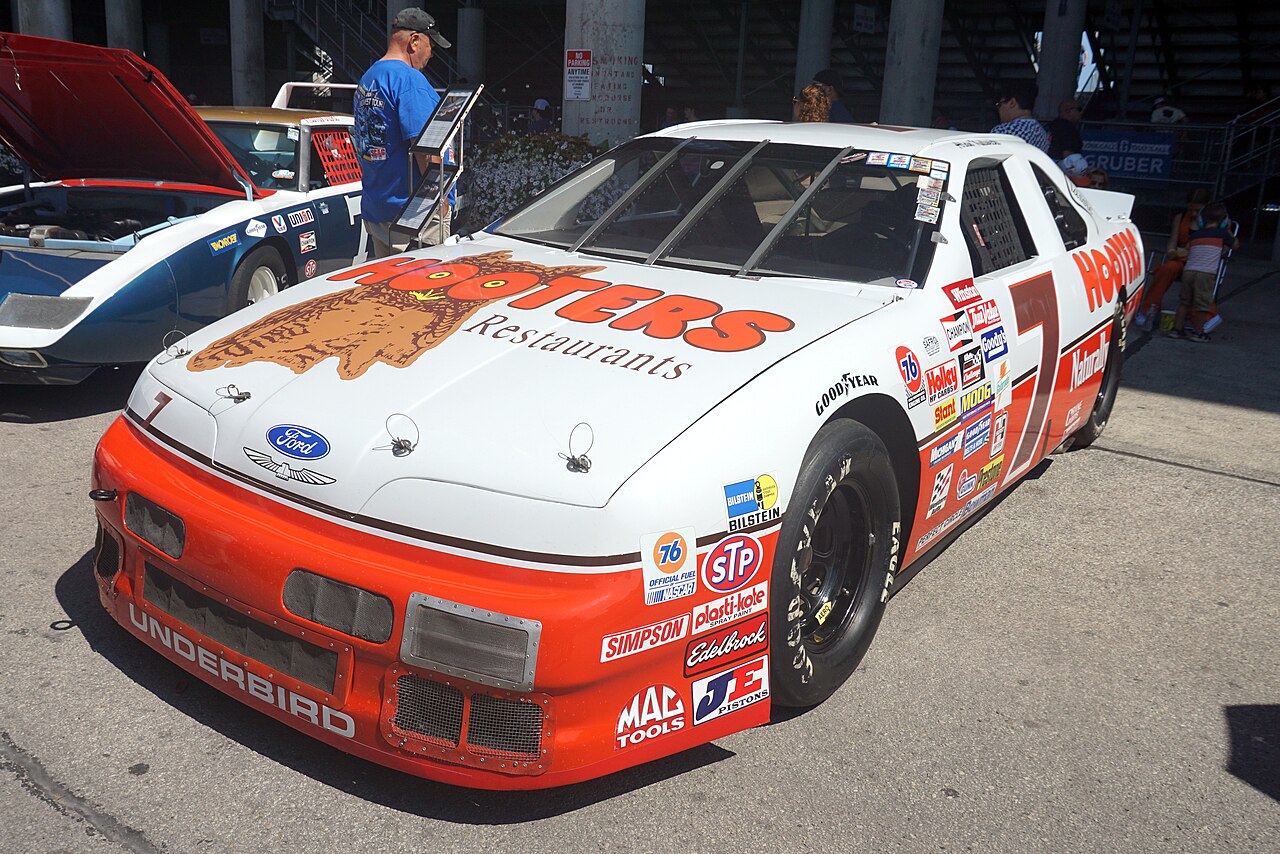 Michael Barera, CC BY-SA 4.0, Wikimedia Commons
Michael Barera, CC BY-SA 4.0, Wikimedia Commons
First 48-Year-Old Rookie Of The Year
Dick Trickle already had more than 20 years of experience in regional short track circuits and three Late Model championships when he ran his first full Cup season in NASCAR in 1989. He had six top-five finishes on the year to earn the NASCAR Winston Cup Rookie of the Year at the age of 48, the oldest to win the honor.
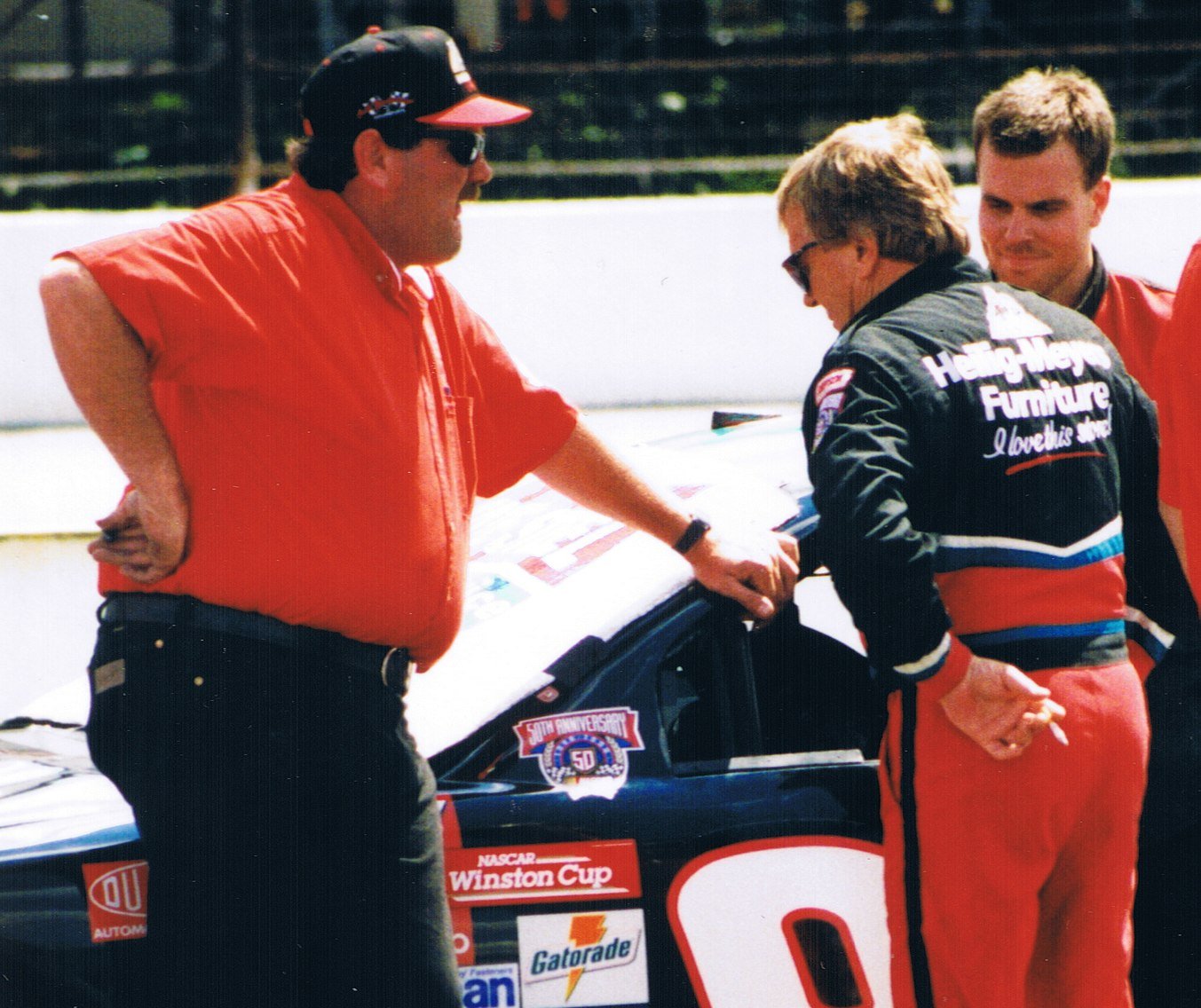 Spikerogan, CC BY-SA 3.0, Wikimedia Commons
Spikerogan, CC BY-SA 3.0, Wikimedia Commons
First 52-Year-Old To Win A Cup Race
Harry Gant won the Champion 400 on September 16, 1992 at Michigan Speedway to take the last win of his career. At 52 years old, the win made Harry the oldest driver to ever capture a cup race, a record that stands to this day.
First Brickyard 400
The first NASCAR race at the famed Indianapolis Motor Speedway brought record fan interest and driver participation. In front of the largest crowd in NASCAR history, Jeff Gordon zipped past leader Ernie Irvan, who suffered a flat tire with five laps to go. It marked Gordon’s biggest win to date in a race that he would go on to win on four other occasions.
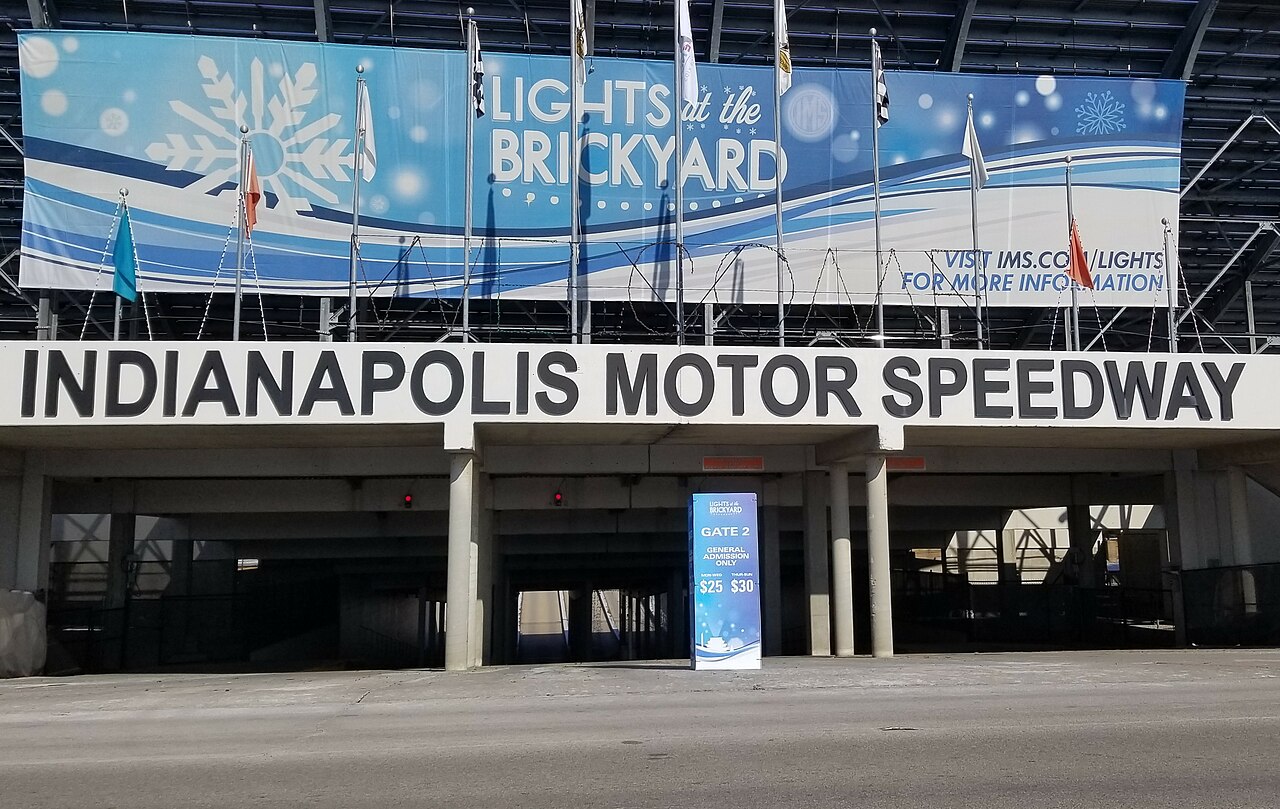 Mike Kalasnik, CC BY-SA 2.0, Wikimedia Commons
Mike Kalasnik, CC BY-SA 2.0, Wikimedia Commons
First Giant Inflatable Orange On The Track
Qualifying runs took a bizarre turn at a 2004 Busch Series race at Chicagoland Speedway. A giant inflatable orange blew loose from an advertising display and began rolling down the racetrack, forcing driver Todd Szegedy to take evasive action. Fans watched in amazement as the giant orange slowly rolled across the finish line, but sadly the flagman didn’t wave his checkered flag.
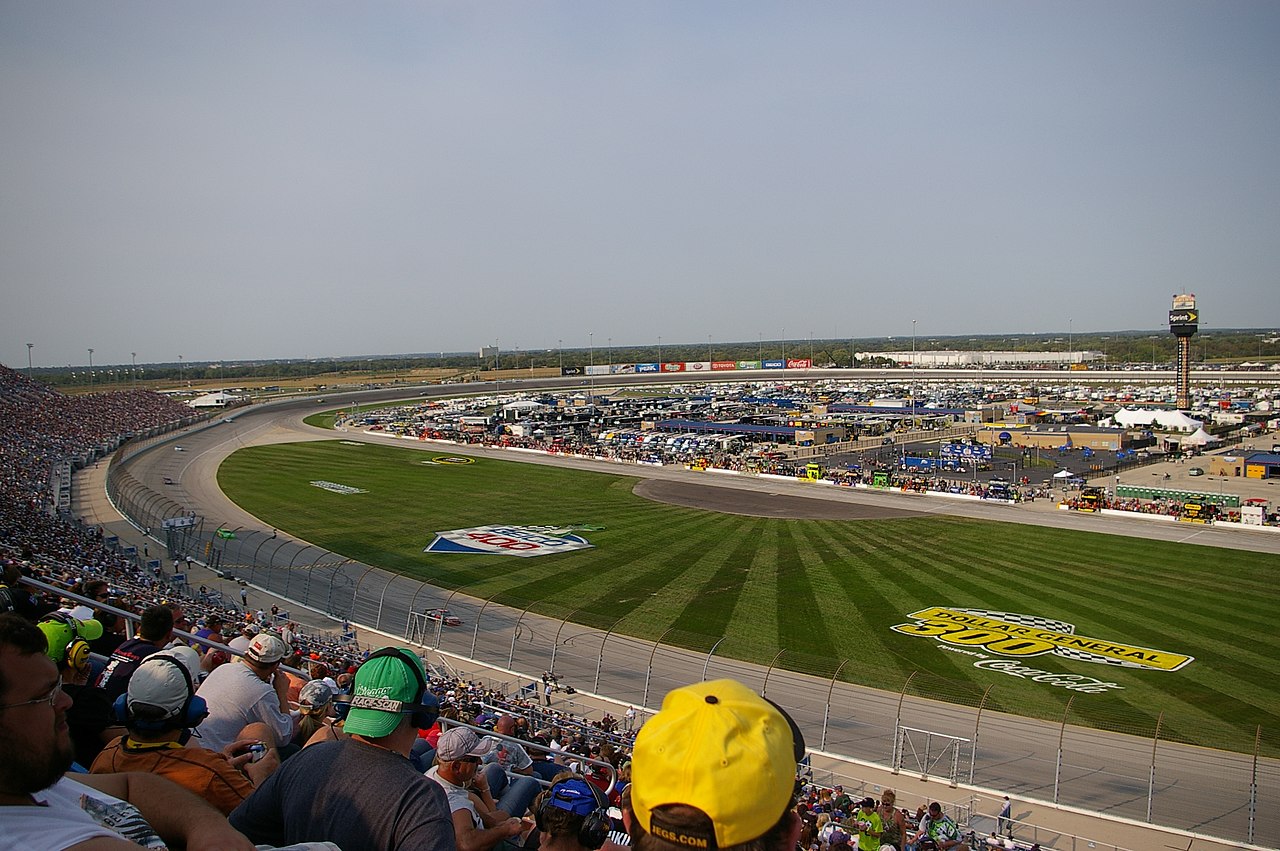 tequilamike, CC BY 2.0, Wikimedia Commons
tequilamike, CC BY 2.0, Wikimedia Commons
First Win For Toyota
Toyota collected its first win in NASCAR on July 31, 2004, with Travis Kvapil driving the Tundra prototype to victory in the Craftsman Truck series race at Michigan International Speedway. The Japanese automaker would venture onward from its truck series success, culminating in the 2015 NASCAR Cup title with driver Kyle Busch in his #18 Camry.
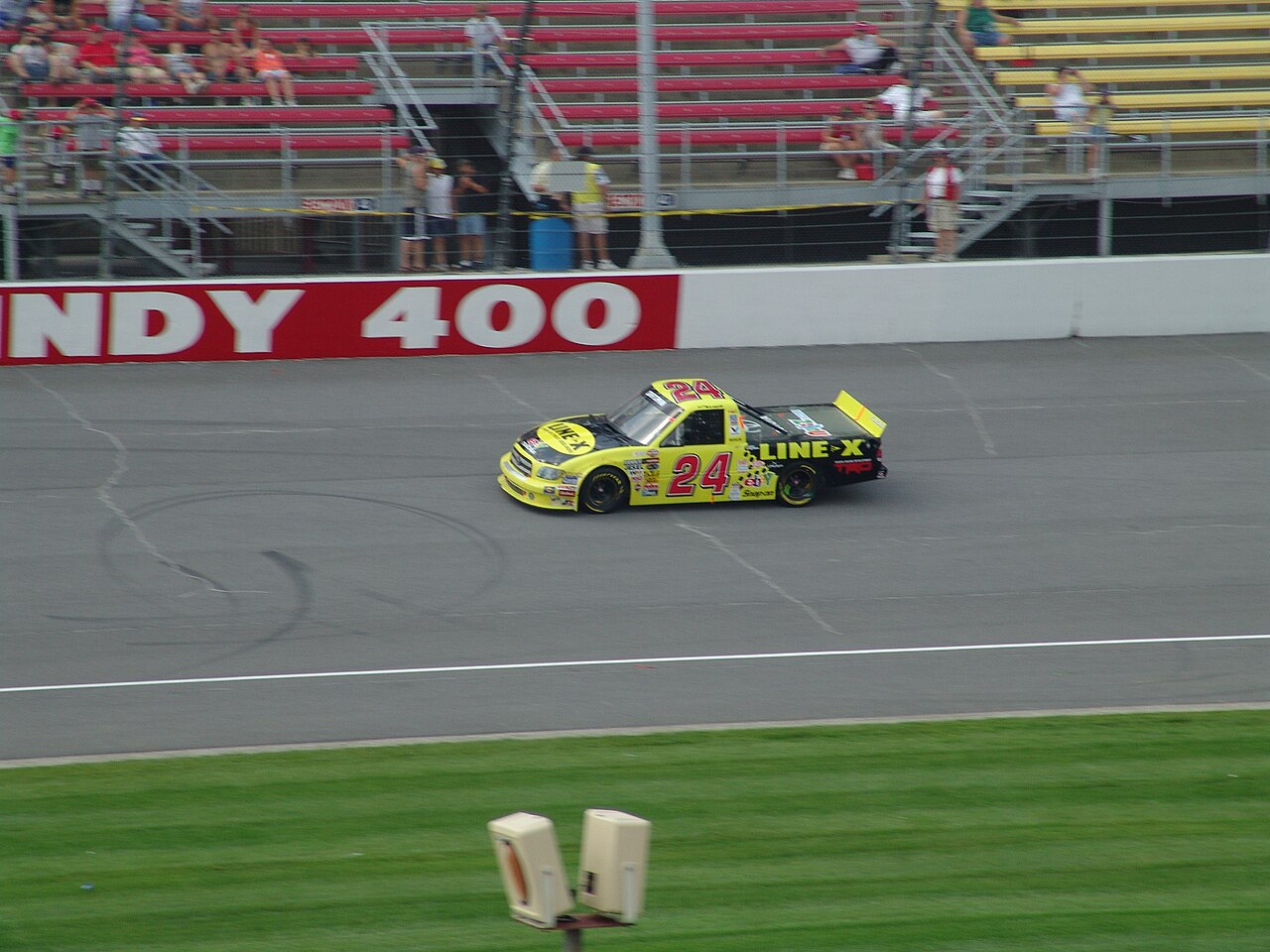 Ljprevo, CC BY-SA 4.0, Wikimedia Commons
Ljprevo, CC BY-SA 4.0, Wikimedia Commons
First NASCAR-Themed Romance Novels
In an attempt to broaden fan appeal, NASCAR formed an unlikely partnership with Harlequin Books in 2006. The result was an ongoing NASCAR-themed series of romance novels with titles like Full Throttle, Turn Two, etc. The series has 40 books reviewed on Goodreads.com.
First Driver With Five Straight Cup Wins
With a second-place finish at the final race of the 2010 season at Homestead-Miami Speedway, Jimmie Johnson claimed the Sprint Cup (now NASCAR Cup) for an incredible fifth consecutive year. It is still the NASCAR record for consecutive championships, and is likely to stay that way for a long time to come.
 TaurusEmerald, CC BY-SA 4.0, Wikimedia Commons
TaurusEmerald, CC BY-SA 4.0, Wikimedia Commons
First Collision With A Jet Dryer
During a caution at the 2012 Daytona 500, Juan Pablo Montoya was trying to catch up to the rest of the pack when his suspension locked up. Montoya’s out-of-control car careened into a gas-powered jet dryer on the raceway. Though nobody was hurt, fans were filled with unease at the sight of the enormous fireball that engulfed the car. The mishap led to the next first on our list.
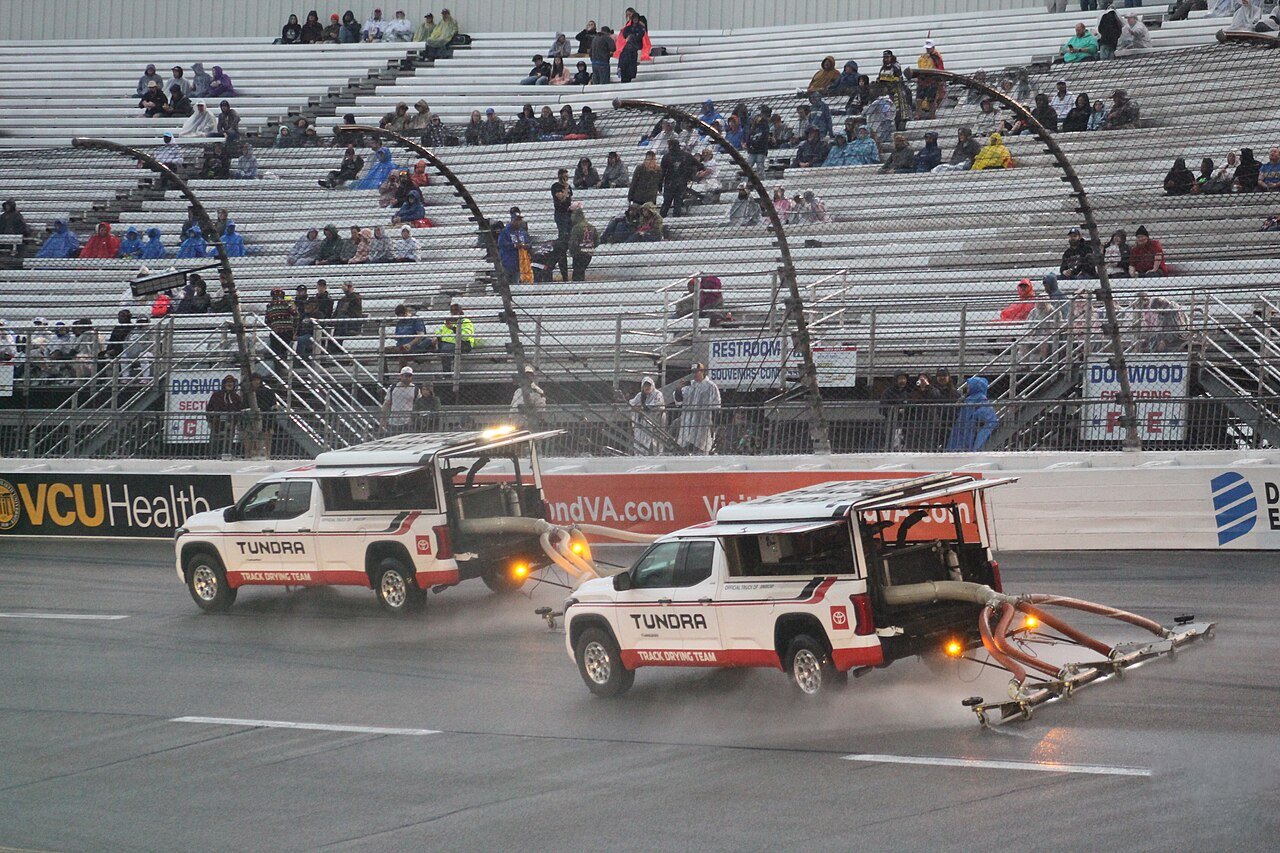 Zach Catanzareti, CC BY 2.0, Wikimedia Commons
Zach Catanzareti, CC BY 2.0, Wikimedia Commons
First Driver To Tweet During A Race
While crews struggled to clean up the mess left by Montoya’s car, Brad Keselowski grew restless and began posting messages and images on Twitter. While it got plenty of likes and retweets, Keselowski’s in-race social media activity didn’t impress NASCAR, who later fined Keselowski $25,000 for tweeting during a red flag at that year’s Phoenix race.
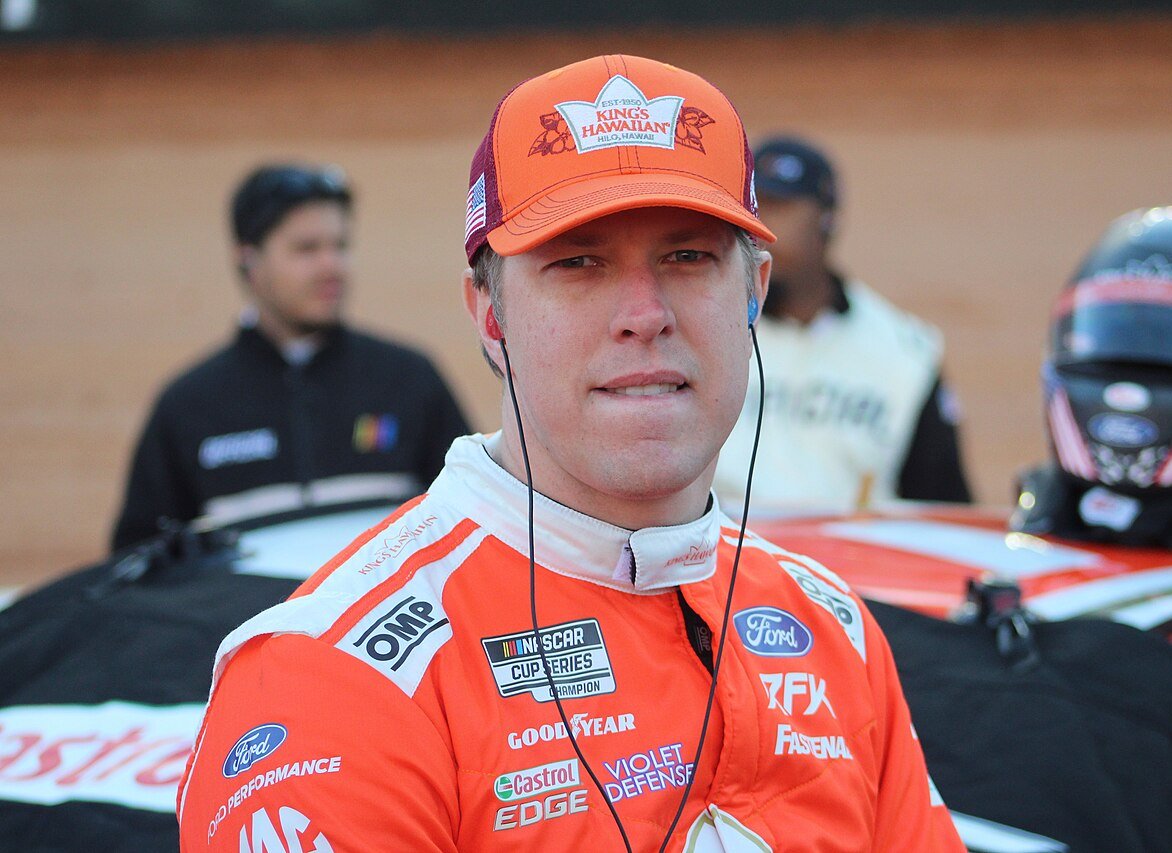 Zach Catanzareti, CC BY 2.0, Wikimedia Commons
Zach Catanzareti, CC BY 2.0, Wikimedia Commons
First Car Damaged By A Skydiver
As part of the opening ceremony for the 2012 AAA Texas 500, a team of skydivers descended onto the infield area. One of the parachutists was blown off course by a gust of wind, colliding with Kevin Harvick’s car. The mishap damaged the door panel so badly that the race was postponed for 30 minutes while Harvick’s team repaired the door. The skydiver was, luckily, ok.
First Cars To Get Stuck Together
In the late stages of the 2022 Craftsman Truck series dirt race at Bristol Speedway, Austin Wayne Self nudged Matt DiBenedetto from behind, but was unable to pull back. With Self’s front bumper hooked under DiBenedetto’s rear bumper assembly, the two trucks floundered helplessly. Rather than let the two conjoined trucks cross the finish line together, caution was called and crews mercifully pried them apart.
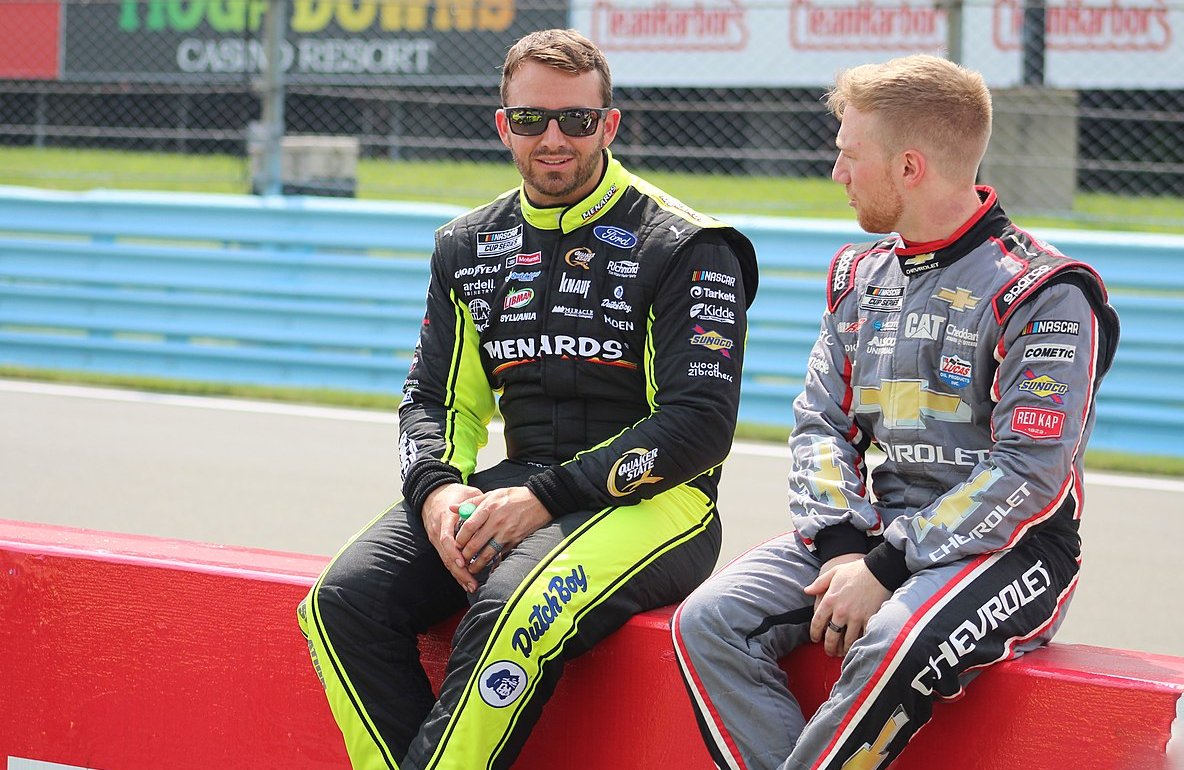 Zach Catanzareti, CC BY 2.0, Wikimedia Commons
Zach Catanzareti, CC BY 2.0, Wikimedia Commons
First Monkey In The Passenger Seat
Tim Flock drove the first part of the 1953 season with a monkey strapped into the passenger seat of his Hudson Hornet. As part of a stunt cooked up by the car’s owner, the rhesus monkey was given the name Jocko Flocko, and was even equipped with his own racing suit and helmet! The experiment ended when the little fellow got spooked by a hit in the face by a pebble, but not before he helped Flock run eight races, winning one. Jocko Flocko remains the first and only co-driver in NASCAR history.
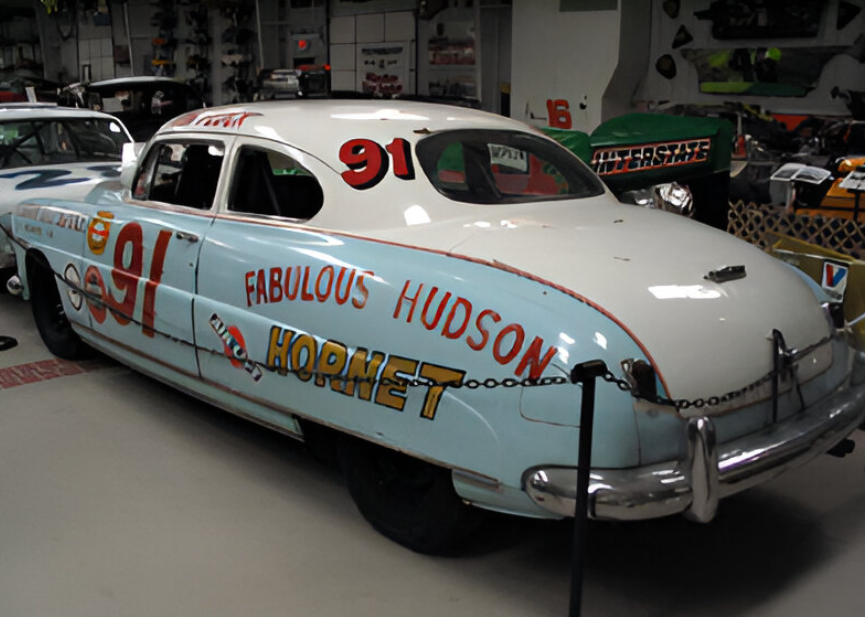 Ed McDonald, CC BY 2.0, Wikimedia Commons
Ed McDonald, CC BY 2.0, Wikimedia Commons


